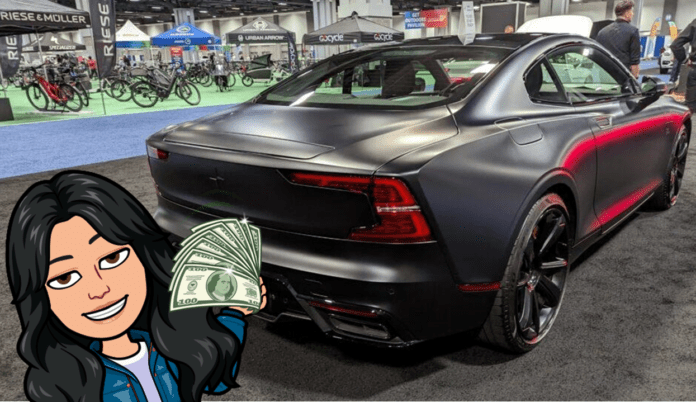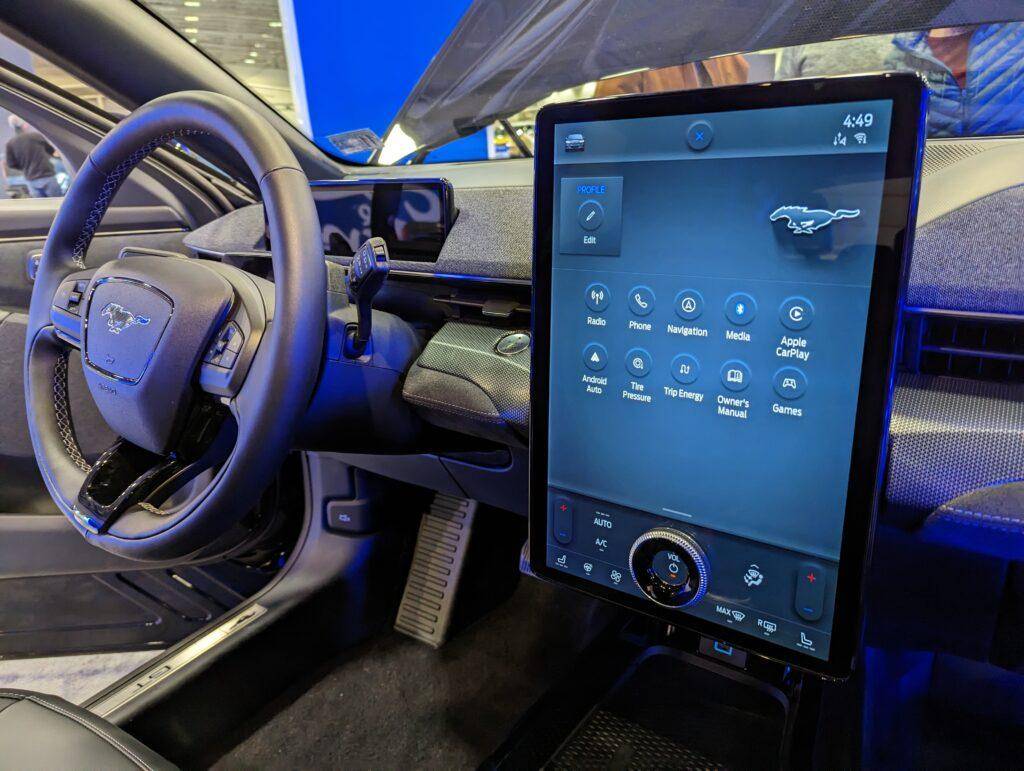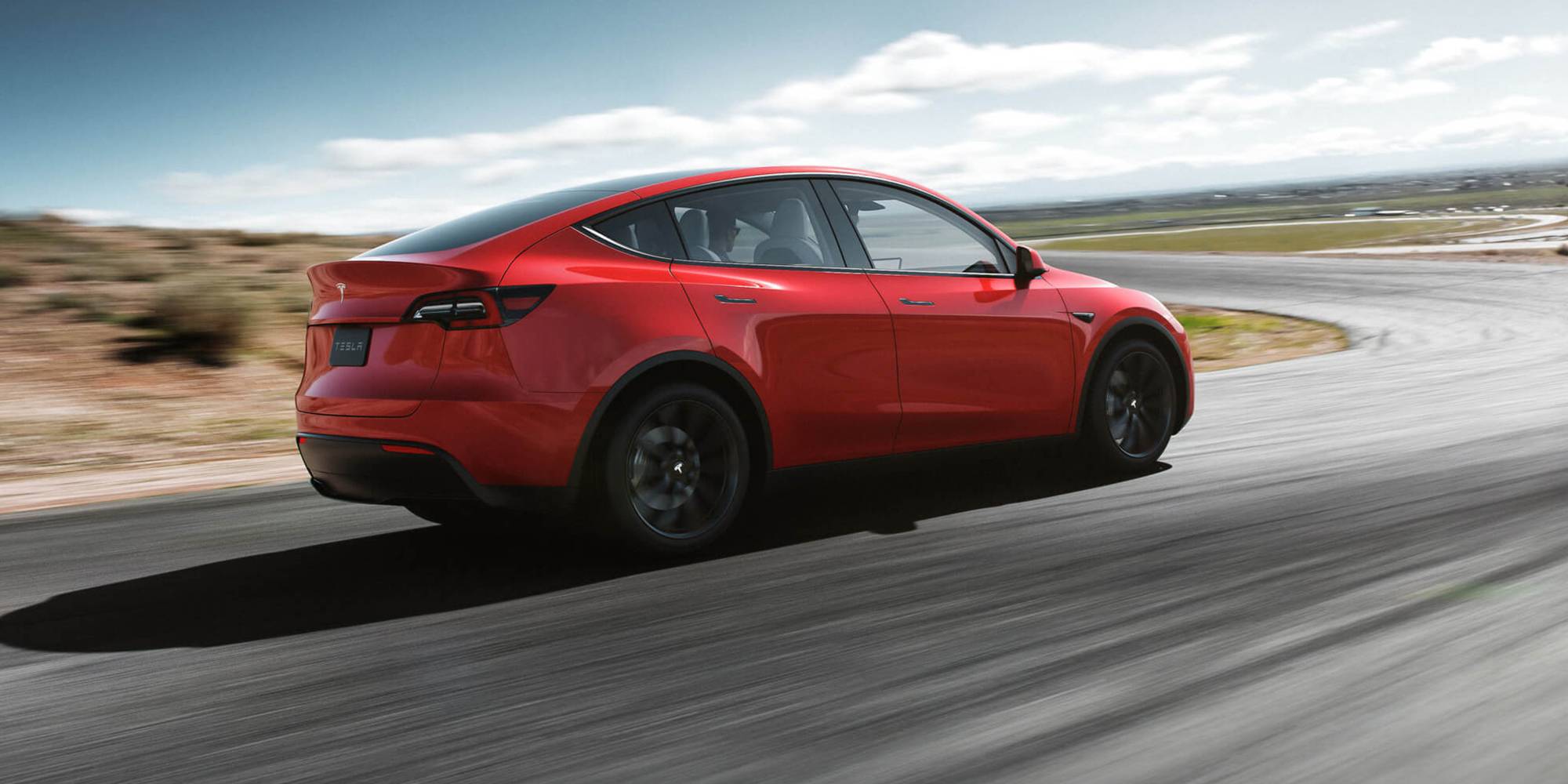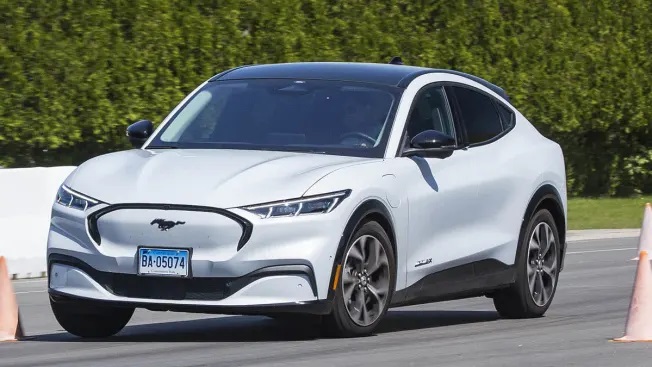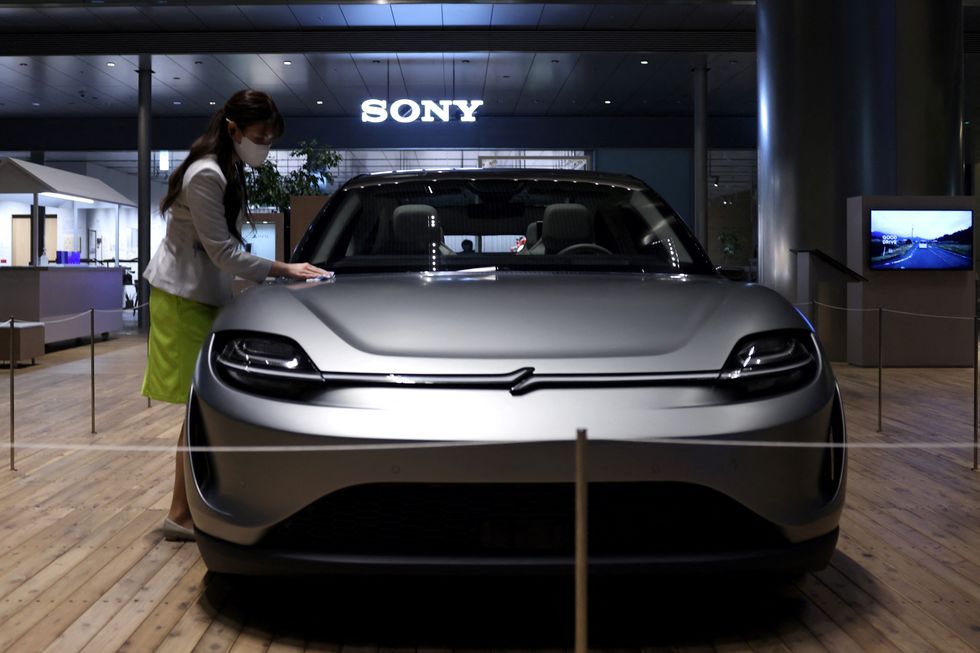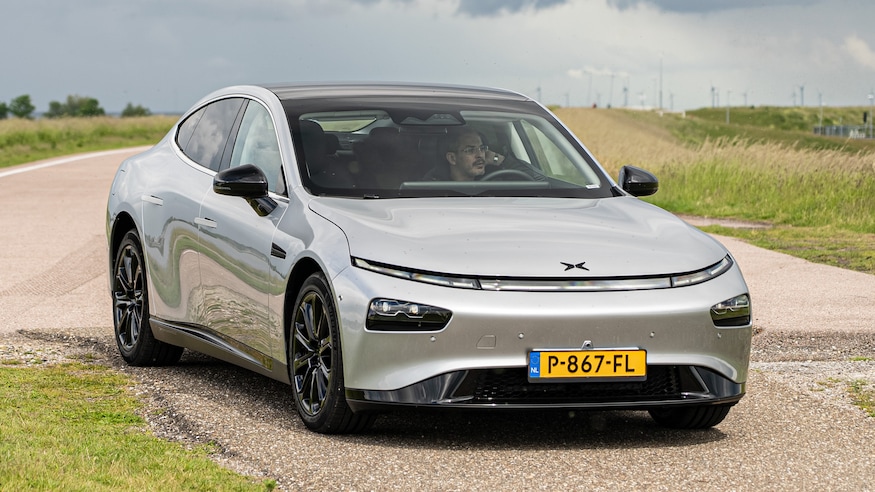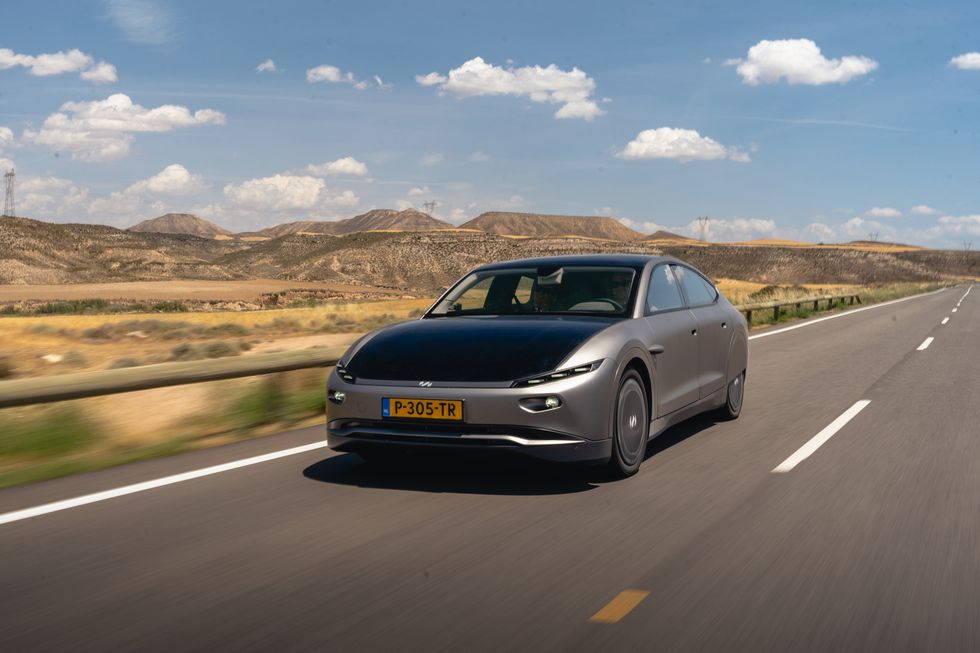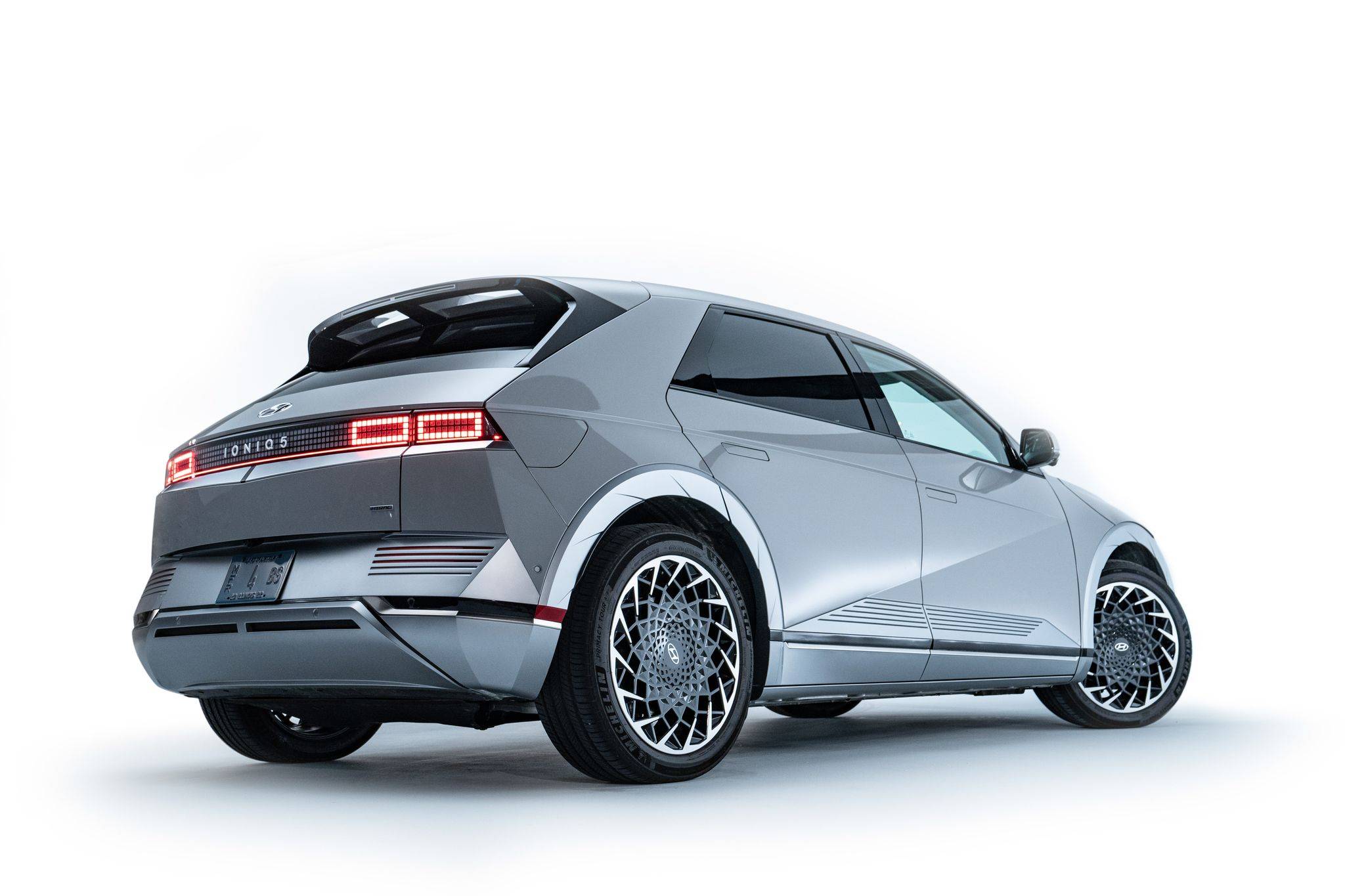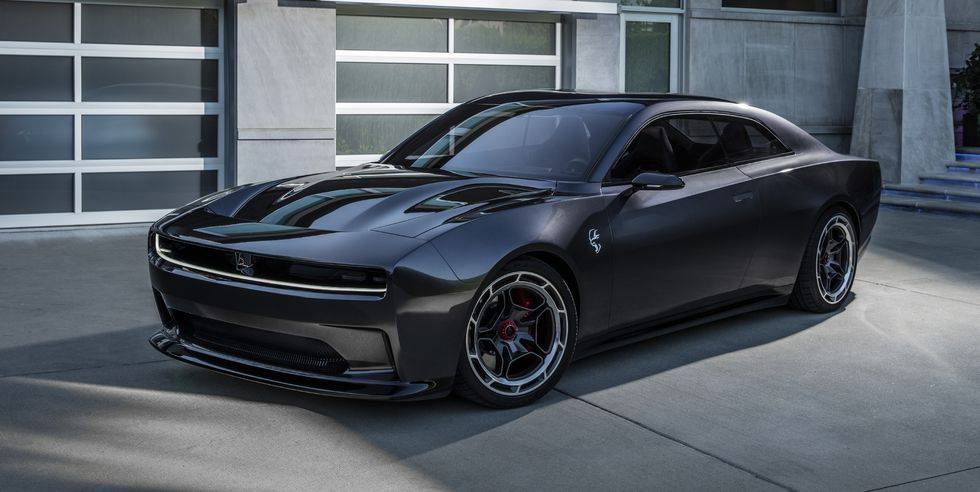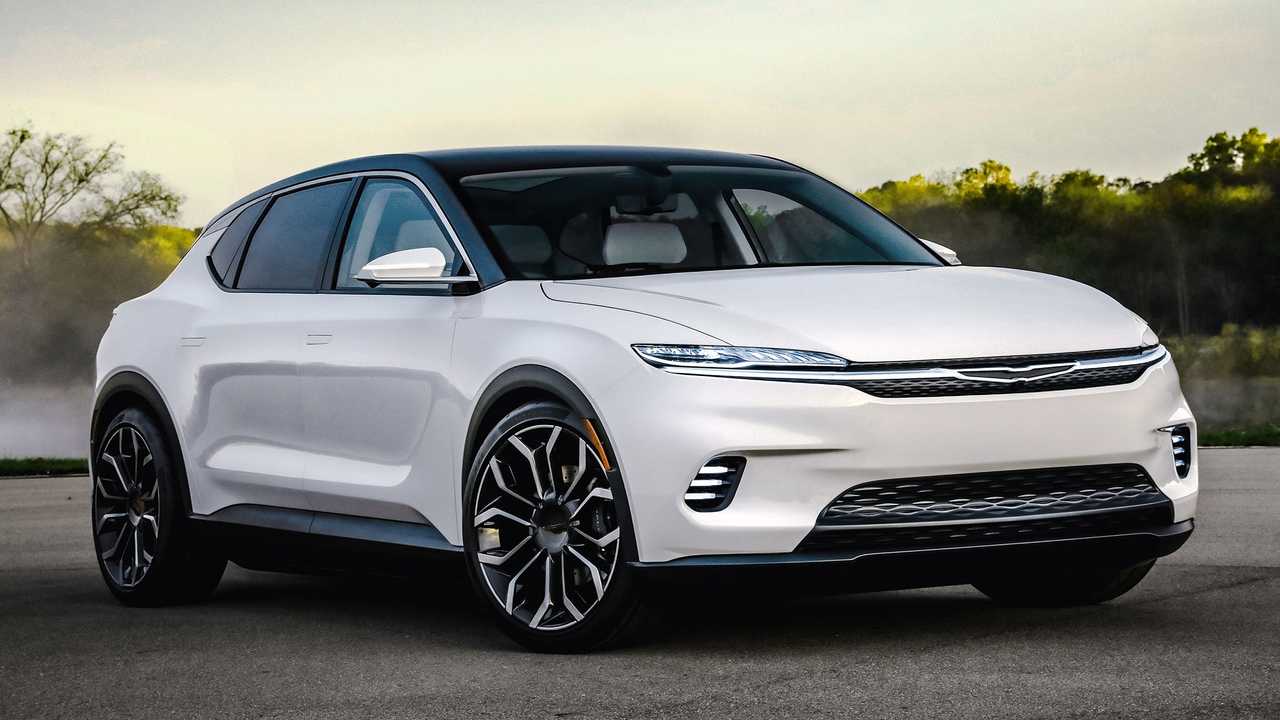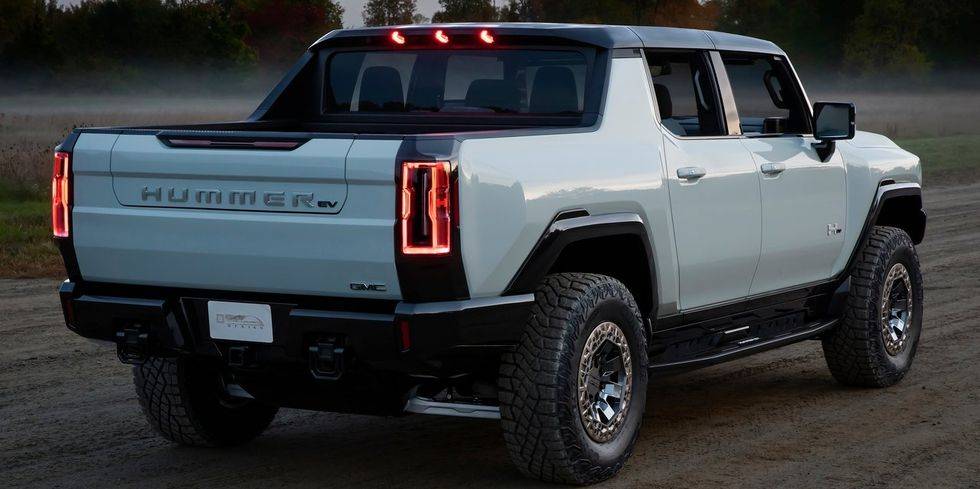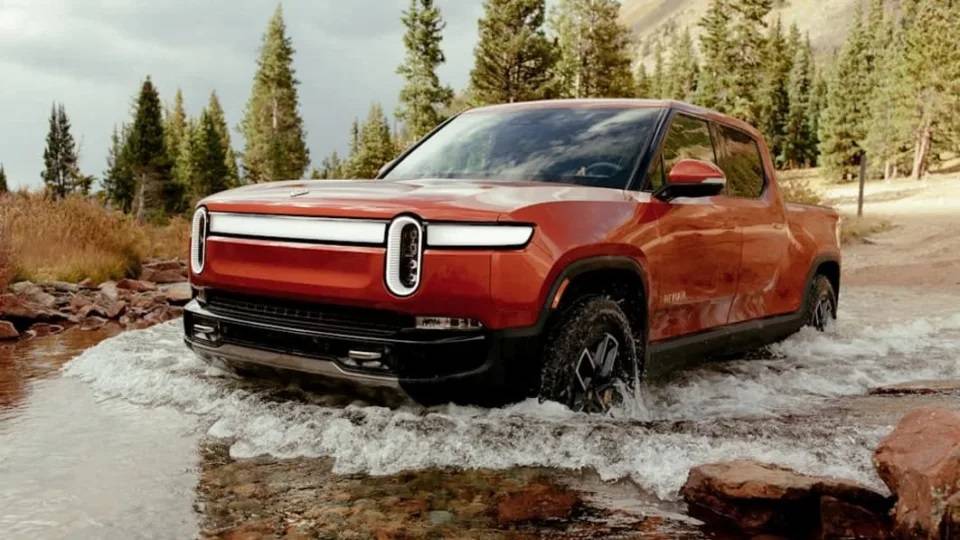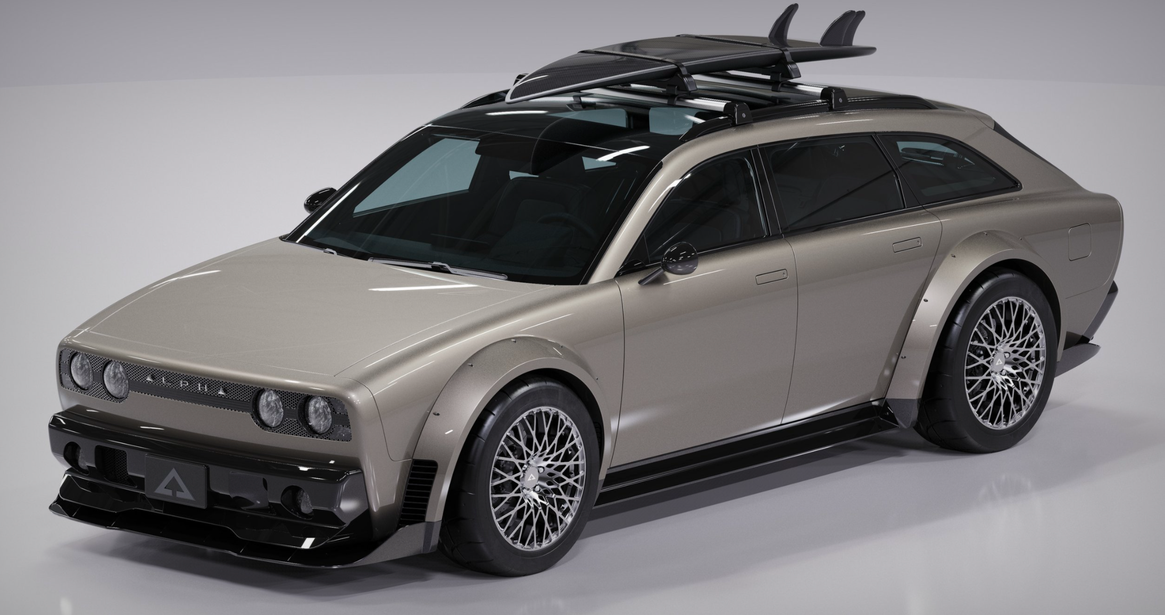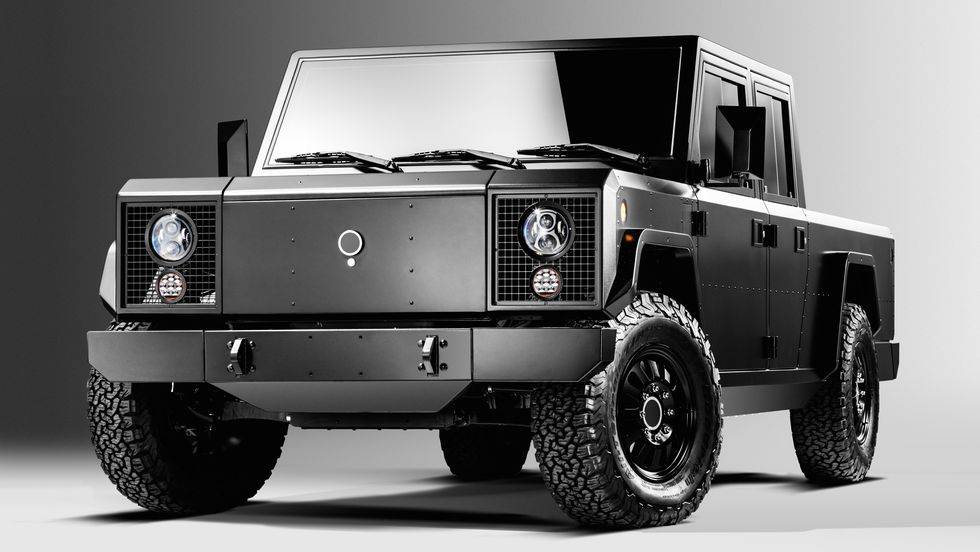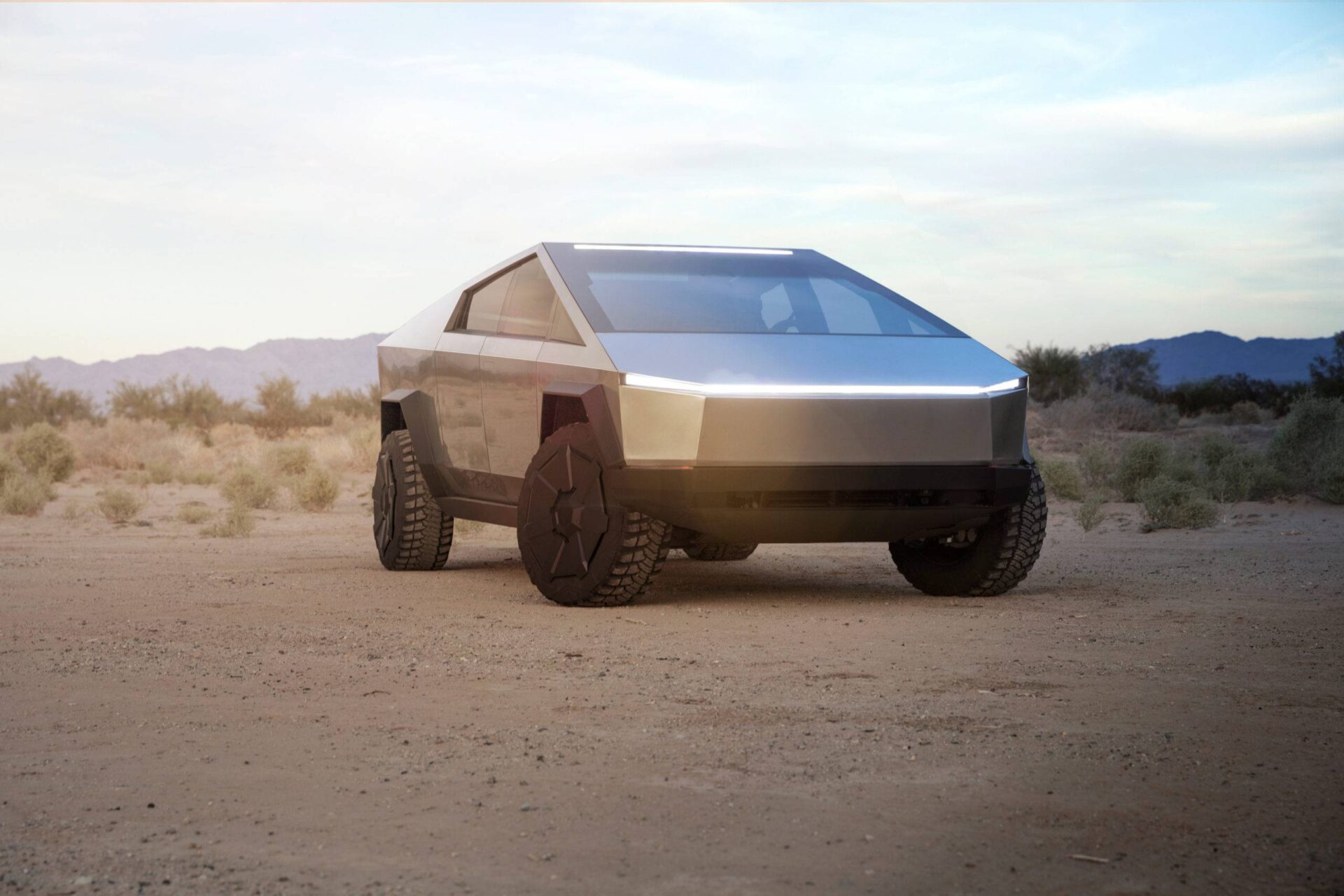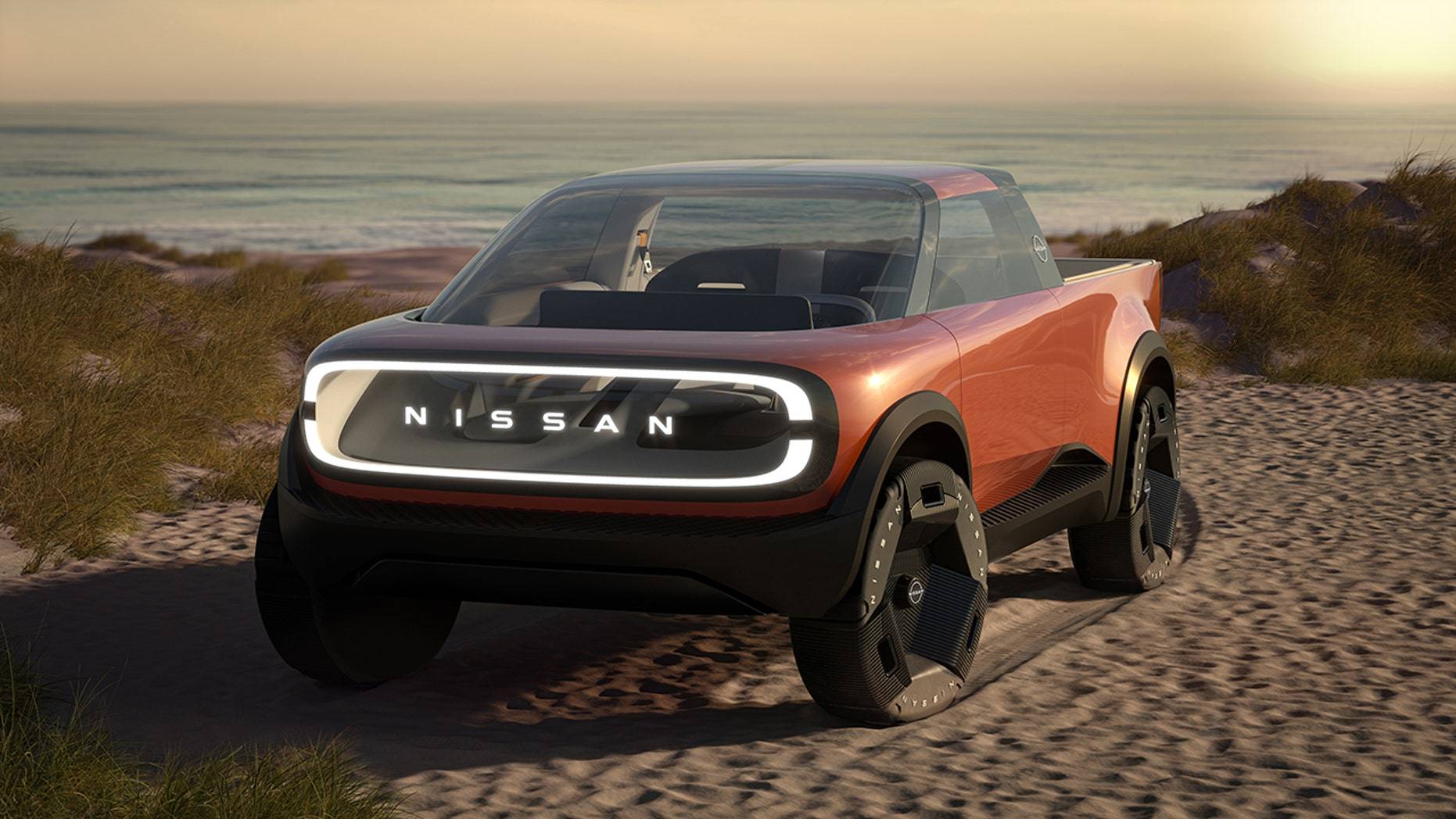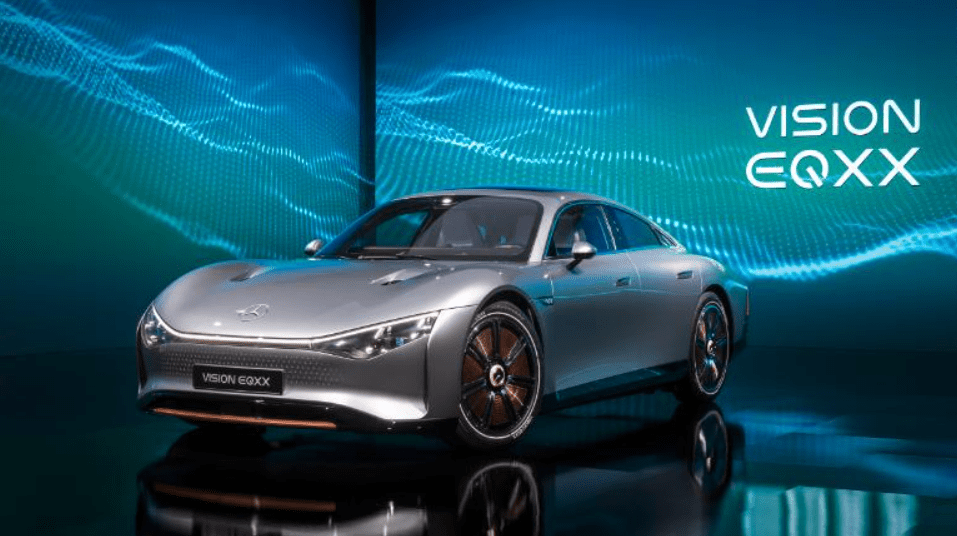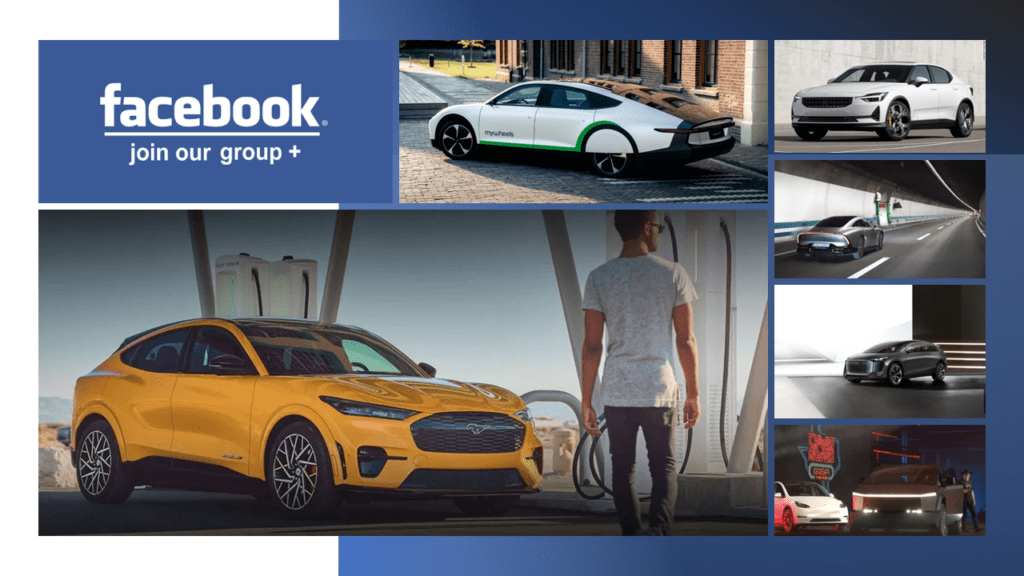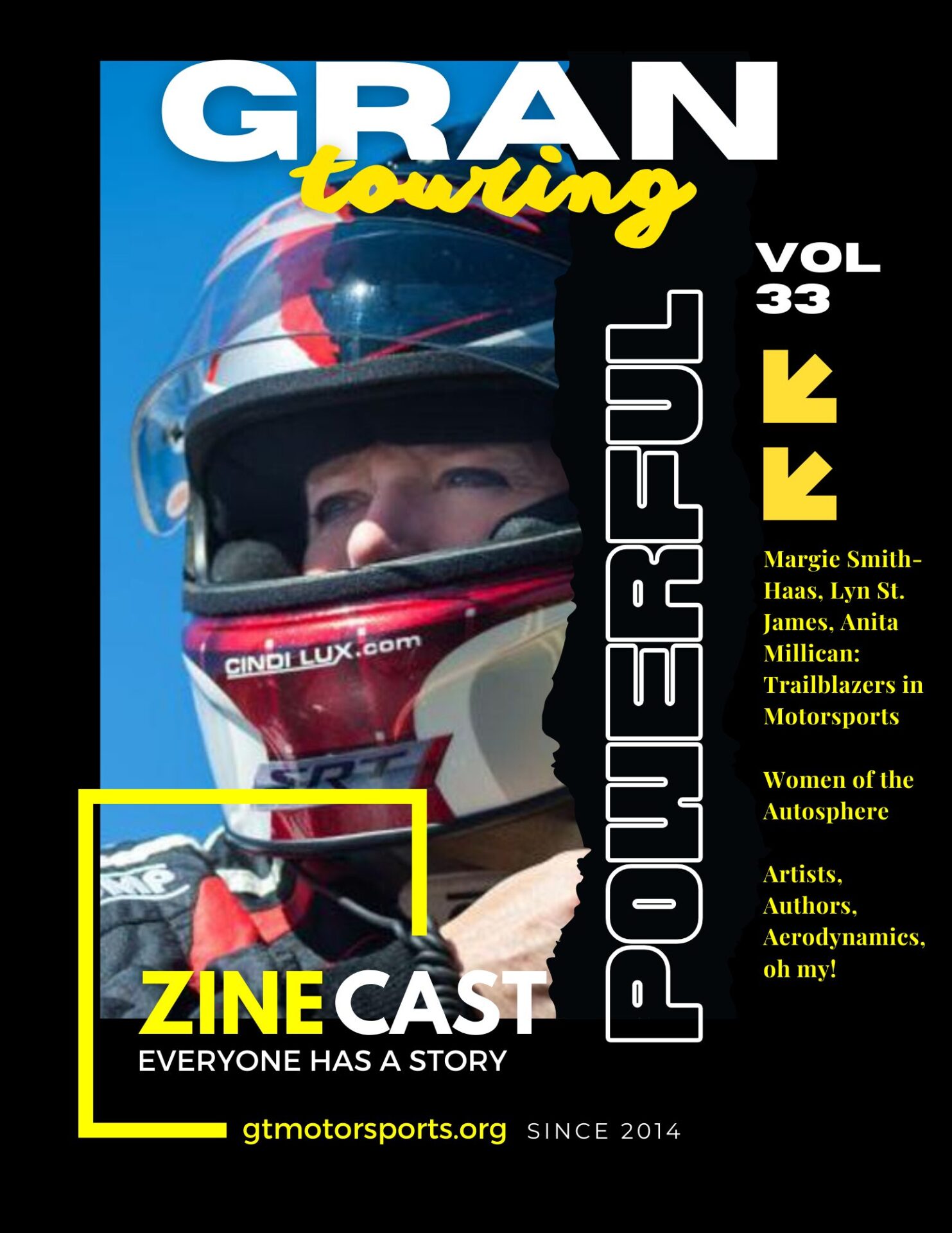Oh the dreaded car buying experience… No matter who you are, it’s probably a safe bet this isn’t your ideal way to spend your weekend. In and out of dealerships, the hassle, haggling, the decision making.
When confronted with car buying in today’s modern world, there are just so many more choices besides make/model & “what color do I want?” Now it’s, “which power source do I want? To what level does it drive itself? Which creature comforts & gizmos are available for subscription? Am I Apple or Android?”
Even before so many choices, men and women have traditionally approached this experience differently for a multitude of reasons, some spanning use cases – from “the mom van,” to car enthusiast.
Today we will be diving deeper into What Should I Buy? from a ladies point of view, focusing on the new car buyer versus car collector demographic, and even more specifically EV buyers. Our group of extraordinary petrol-head panelists range from veteran car reviewers, to prospective buyers, as well as ladies already living with EV’s. We’re here to explore what to look for in today’s EV car market.
Joining us tonight we have some returning Break/Fix guests… please welcome: Sara Lacey from A Girls Guide to Cars, Carolyn Ford from the Tech Transforms Podcast, Gran Touring Motorsports club members Emily Fox and Chrissy Crutchfield as well as special guest Kat DeLorean from DNG Motors!
Tune in everywhere you stream, download or listen!
 |  |  |
So many alternative fuel choices…
In our discussion we cover topics like:
- Notes
- Transcript
- Highlights
Notes
- Carolyn – has been considering a new car, but cost is a factor; she even went and test drove a Tesla recently – thoughts?
- Let’s address the elephant in the room – is anyone here suffering from range anxiety? Is this even a “thing” anymore?
- Living with EVs today; what did you choose and why? What are the positives and negatives of owning an EV (pun intended)
- Let’s talk about “the car buying experience” in general. Do you prefer going to a dealership or car show or some other venue to check out new cars? Are dealerships still relevant? Should we move to online ordering?
- Kat – building her own supercar – how tough is the decision right now, petrol, hybrid or EV. Which direction are you taking the JZD in?
- Cost is always a huge concern… Thoughts on what EVs are going for? Are they priced appropriately? Should they be cheaper?
- TESLA vs The World
- Thoughts on EVs – which one, why?
and much, much more!
Transcript
Crew Chief Brad: [00:00:00] Our panel of break fix petrolheads are back for another rousing what should I buy debate. Using unique shopping criteria, they are challenged to find our first time collector the best vehicle that will make their friends go. Where’d you get that? Or what the hell is wrong with you? At the next Cars and Coffee.
Executive Producer Tania: Oh, the dreaded car buying experience. No matter who you are, it’s probably a safe bet this isn’t your ideal way to spend your weekend. In and out of dealerships, the hassle, haggling, the decision making. When confronted with car buying in today’s modern world, there are just so many more choices besides make model and what color do I want.
Now it’s which power source do I want? To what level does it drive itself? Which creature comforts and gizmos are available for subscription? Am I Apple or Android? Even before so many choices, men and women have traditionally approached this experience differently for a multitude of reasons, some spanning use cases, from the mom van to car enthusiasts.
Today, we will be diving deeper into what should I buy from a lady’s point of view, [00:01:00] focusing on the new car buyer versus car collector demographic, and even more specifically, EV buyers. Our group of extraordinary Petrolhead panelists range from veteran car reviewers to prospective buyers, as well as ladies already living with EVs.
We’re here to explore what to look for in today’s EV car market. Joining us tonight, we have some returning Brake Fix guests. Please welcome Sarah Lacey from A Girl’s Guide to Cars, Carolyn Ford from the Tech Transforms podcast, Grand Touring Motorsports. Sports Club members, Emily Fox and Chrissy Crutchfield, as well as special guest Kat Thelorean from DNG Motors.
Welcome to the show, ladies.
Emily Fox: Hello. Thanks for having me. Hello.
Executive Producer Tania: Thank you. Hi. We’re here to talk cars. Where are we in our car journeys? So I’ll start. I am not an EV car owner. That’s what our main focus of discussing is tonight. I am, in fact, not even a new car owner. All my cars are aged. [00:02:00] If you will,
Chrissy Crutchfield: for historic tags, right?
Executive Producer Tania: Yeah, I got one on historics already. Another I could put on historics this year and my daily driver, I can’t put on historics, but it would be ready in two years. So
Kat DeLorean: I’m right there with you. I don’t have an EV or any real new cars. I think my newest car is 2017. I’ve owned a hybrid before, but all of my cars are internal combustion.
Emily Fox: I own many cars. I actually own a new car. I own a 2022 XC40 Recharge, smaller size SUV, and I freaking love this thing. This is my daily driver. And I also have a 1967 MGBGT, which has the interior pulled apart, so I’m currently in the middle of year two of redoing it. But, Buying the SUV EV was perfect for me.
I’ve got two girls. I need to carry all their soccer stuff around and all their girl scout stuff everywhere, all over Maryland every weekend. And it works perfectly for that. Going to the grocery store, whatever it is that I need. It does take a while [00:03:00] to fill up, but for a daily task car, and you’re only going maybe an hour, an hour and a half out of your.
Regular charting area. It’s not too bad.
Executive Producer Tania: So Emily’s winning our oldest car prize. I was winning until Emily spoke. So
Chrissy Crutchfield: Chrissy, we have the Volkswagen ID for first edition and we just got a new Toyota Tundra, but obviously that’s off topic and we have two others, mostly older cars. I’m excited to share and make suggestions even because there’s a few that I’m actually interested in.
Carolyn Ford: I am not a new car owner either. My car is a 2016, but I did buy my son for his first car, a hybrid. He’s still driving it right now. It’s a 2005. I’ll have to ask him how many miles. I feel like it had almost 150, 000 miles on it when I bought it. And I live in Utah. We just got dumped on with snow like 15 inches.
Like, he gets to where he needs to go in this little Prius, which always shocks me.
Kat DeLorean: That was my hybrid. It was a [00:04:00] Prius. I loved it. It was my fun little clown car.
Carolyn Ford: Yeah, he loves his and I drive a CR V because I do a lot of outdoor things and like, I’m going up the mountain to ski. So I need room for my skis and everything.
And I’m always worried that I won’t be able to get to where I need to go, but he doesn’t seem to have a problem. He snowboards, he’s taken it up into the mountains. So I’m very interested. In a pure EV and I’m lazy and impatient, and I don’t want to have to wait at a charging station for 45 minutes. So I can’t wait to have you guys help me get over these big hesitations for an EV because I want one.
Executive Producer Tania: Sarah, round us off.
Sara Lacey: Okay. I have a 2021 Tesla model Y and I have a 1982 Porsche 911 SC.
Executive Producer Tania: Oh, as we dive into this outdoors. You want to take it into the mountains, you want to load your ski or snowboard gear in it, you’re lazy, you’re [00:05:00] impatient, you don’t want to wait three hours at the charger station.
Carolyn Ford: Well, and I go to the desert, so my runs like to the desert from my house, it’s a three, three and a half hour ride.
I’m going to have to stop and charge halfway there, right? And how long is that going to take, Emily?
Emily Fox: Uh, a while, depending on what kind of car you buy. And depends on what year it is. Because if they actually do anything about the EV charging grid across the continental United States, it might get a little bit better.
But right now, it’ll take you a really long time if you can find a charger on your way there and back.
Executive Producer Tania: Exactly. So ladies and gentlemen listening, we are quickly devolving into what should I not buy and that’s an EV car.
Carolyn Ford: That has something to say
Kat DeLorean: here though. Talk me into it. You’re shaking your head. No, I’m shaking my head because if you brought me on here to convince you to get an EV, he called the wrong guest.
No, I think
Carolyn Ford: I wanted you to convince me because I want to be a good global citizen [00:06:00] and do my part.
Kat DeLorean: My question is, is with all of these requirements and concerns and your experience thus far with a car that was purchased with 150, 000 miles on it, why are you going EV and not hybrid? That’s
Carolyn Ford: what I want to ask you guys, like right now.
I just heard a story on NPR that totally crapped all over the hybrids and said, we got to do better and go into the full EV, but I agree with you. Like the hybrid seems like a really good way to go.
Emily Fox: It’s not for everyone.
Kat DeLorean: There’s a lot of things that go into EVs being greener. And there’s a lot of things that are going into what’s happening with EVs right now.
While you may want to get an EV eventually, that’ll meet all the needs that you have, you’re not necessarily a bad global citizen for going hybrid because an EV right now doesn’t meet your needs. Also, in order for the electricity that’s charging your EV to be greener, it has to come from a greener source.
than the [00:07:00] gasoline or in some way. That
Carolyn Ford: was another big question of mine.
Kat DeLorean: How do you know that what you’re charging with isn’t doing just as much damage? If you want to be a good steward of the environment, work to offset the carbon you use until you can get something that can be a fully neutral vehicle.
Don’t try and change your entire life just because you want something that everybody else will look at you and go, Ooh, look, she’s doing great for the environment.
Sara Lacey: It’s a great way of putting it. Well, and I think that that speaks to the idea that there’s a discrepancy between what is available and what people can manage in their daily lives.
And there is something to wanting to speak via your wallet. You know, I’m going to purchase an EV because I know that maybe everything I want in an EV isn’t there yet, but I want to push that forward by purchasing an EV or a plugin hybrid at this. Stage of the game, there’s a lot of gray area to consider for this.
[00:08:00] And I do think that your feelings are valid that yes, you do want to be a global citizen and recognizing that it’s not maybe a hundred percent the right choice for you right now, but it doesn’t mean that you can’t also find something that bridges that gap. Day to day, we’re just seeing so many more models.
We’re seeing so many improvements in infrastructure, but there’s still a lot of work to be done. Charging stations are tough. Understanding and being a consumer in this environment is tough. We all have to become electrical engineers all of a sudden. It’s a very early time in the life of EVs. So you have to be patient with yourself.
And unfortunately, you have to do a lot of homework. I don’t want you to, uh, lazy shame yourself. It’s just a lot of information to take on right now.
Kat DeLorean: Yeah. I have a question about the environmental impact of EVs. So I buy an EV. Let’s say I buy, I think it was a Chevy Bolt, which is about 20, 000. And in [00:09:00] eight years, With an internal combustion engine, I would have turned around and sold that car or a hybrid with 150, 000 miles on it, and it would have continued to live on.
But in eight years, it’s going to cost somebody who spent 20, 000 on a car 15, 000 to replace the battery. So you’re creating a bunch of throwaway cars. while harvesting all of the lithium from our planet and these toxic chemicals that create death napalm when they catch on fire to save the planet.
You’re who I needed to talk
Carolyn Ford: to.
Kat DeLorean: I feel
Carolyn Ford: better
Kat DeLorean: about myself. I’m telling you that I am not the person to convince you to buy an EV. Also, our electric infrastructure can’t support our air conditioning. Do you guys know what happens when you bring three electric Cadillacs into a dealership at once? You can’t plug them all in or the whole dealership goes dark.
It’s not just the charging stations. We don’t currently make enough electricity to support every single person plugging car into their house. So we can’t push EVs for every single [00:10:00] person when there are other options that we had available to us to put our research towards and They’re not available for us to buy now.
And I have feelings about the fact that they’re going to be delaying
Sara Lacey: them. Because I feel like too, that is yet another piece that’s moving along. You know, it feels like a snail’s pace for a lot of us, but when I was at the Chicago auto show and there was a woman there from Con Ed speaking, and she was talking about how, what we have to remember is that every single person isn’t going to plug in every single night.
And crash the grid, granted, she’s in the Midwest. She’s not speaking from the standpoint of someone in California, where you have to manage things like brownouts and whatever. And one of our writers on our website, she just bought this really cool solar generator. In the event of a brownout, she’s still going to have the option to charge her car from the solar generator.
So it’s yet another piece. That we’re seeing a lot of development taking [00:11:00] place. I think it’s important that we recognize too, that that kind of information and those things change on a month to month basis, things are changing. They’re figuring things out. We still don’t really know for sure how recycling these batteries is going to work, and we don’t know for sure what that cost ultimately will be.
We’re facing a massive, massive phase of early adoption. We just really haven’t seen that on this scale. So it’s hard to know
Kat DeLorean: we’re not creating throwaway batteries. We’re creating throwaway entire cars. That’s my problem with it. It’d be one thing if we were just causing an issue with recycling the batteries, but it’s causing the cars to be something we just toss away.
I don’t know how much people on this call. No. There is an existence, a hydrogen peroxide engine that was developed and quashed because of EV policymakers. So again, I have very, very strong feelings about what’s happened in the EV world.
Executive Producer Tania: You mentioned people probably aren’t going to plug in every night. I don’t know if [00:12:00] that’s true or not.
Chrissy Crutchfield: I plug in every night.
Executive Producer Tania: I would, I do. I don’t have to. But I do, you know, they’re pushing the trend toward, you know, everyone’s no longer building internal combustion engines by the year last year, you know, and it’s Evie or die, you’re going to have multi Evie cars in your home. Someone’s going to be plugging in every night.
You’re right. The grids can’t handle it. We’ve seen this in the last couple of years, the huge outages in Texas where everyone was freezing to death because the grids couldn’t support it. And they’re their own special case of owning their own infrastructure and electricity. So we won’t go there, but nonetheless, there’s always brownouts and blackouts in California and this, that, and the other, that is a big problem.
And Kat, to your point, what’s always seems to be missed as a life cycle analysis. which is literally from
the
Executive Producer Tania: very beginning of the smallest component that goes into the car to what happens when it is put in the crusher at the landfill and put back into the earth. I still haven’t gotten a good read on what that is [00:13:00] versus your traditional ice engine car.
I mean, a lot of the components are the same. You’ve got the frames and the body panels and all that, but you just have so many more electronics that are specialized that we know aren’t Great to just throw out into the oceans, right? I’m not necessarily convinced either that 100 percent way that the future should go.
I think there’s room for them, and I think they have great use cases, and there are great times they should be applied. But just like your finances, you don’t put all your eggs in one basket. You need to diversify. So there’s still room for our hybrids, even more than regular ice engines. And there’s also homes for EVs as well as hydrogen engines.
Hopefully if they can, you know, solve the impending Hindenburg issues and whatever other, you know, technology Dutch are trying to put solar panels on the tops of cars and you can run them for an hour a day or whatever. There’s all this going on. It’s a complicated answer.
Emily Fox: It is, but you bring up a really interesting point that I don’t think a lot of people actually [00:14:00] think about when they’re talking about what kind of car should I buy is the ability of you to maintain or work on your own car.
We’ve had gas powered motors. For such a long period of time, decades upon decades, culturally, in that era of growing up, there was a reasonable expectation that you as the owner of your car were responsible for the maintenance of it. And it wasn’t until you got mass market production of all of these kinds of vehicles in like the 1980s and the 1990s that you started to see this, as Kat put it, this throwaway kind of mentality associated with cars, you go to a specialty shop to do a repair on it.
You’re not necessarily doing it. Yourself, you’re not being taught those skills. The next natural iteration of that, as you modernize engines to be more efficient, to do more, to do amazing things of whatever anybody wants it to be in saving the environment, you’re taking away the ability to be self maintaining on your own vehicle.
You’re abstracting that. And you see that today in a lot of technology concepts, going from writing on something with a paper, pen and [00:15:00] pad to actually scribbling on your iPad with it, and how many layers of extraction and tactile difference. You’re losing over the course of that. And when that happens, there is no life cycle assessment because we’ve not been around long enough to say that there’s somebody that can actually work on EVs and recycle those batteries and reuse those parts and rebuild those parking sensors by themselves.
Executive Producer Tania: And then when it’s an uphill battle, because there’s. For years now, actually, I think there’s been groups that are trying to advocate the anti right to work. You’re not allowed to work on your car. You have to go bring it to a service station or auto dealer, whoever it is. I hate
Emily Fox: that. I hate that so much.
Kat DeLorean: That’s terrible. I hope that never passes. That’s actually something that we’re working very, very hard on in the design of our car. I love working on my car for Many reasons, my car is one of the best engineered cars ever. That C7 is just beautiful. And the weight distribution, it’s an incredible car. I can’t get in there.
It’s too tight. My husband and I have been talking about this loss of a design. 50 percent of kids today, they don’t [00:16:00] want cars. And we believe part of it is because you have that loss of tactile relationship with it. You can no longer work on your cars. And so one of the questions I said to my technology engineers was, can we Minecraft the car or Linux the car?
Make it open source, take it to somewhere where we can open source, right? Start to actually work on our cars. Because not only do you have this battery obsolescence, you’ve planned obsolescence in the technology. You’re not going to have these cars supported their computers on wheels. And so what happens when windows goes end of life and it’s no longer supported, you can’t get updates and the what’s going to happen to these cars.
There is a throwaway. Whereas you can still buy a 64 GTO today. There is an absolute death point on these cars where they will not be able to be revived, no matter what you do now with hybrids, you have an interesting situation where if this hybrid dies, you can actually rebuild it. With a mid engine internal combustion engine.
[00:17:00] So there is an opportunity for at least some of these cars to be repurposed. And I do believe that if you start to think about that in these EV cars, okay. When it dies, it’s going to die. How do we create something that can be turned into something else?
Carolyn Ford: Is the throwaway thing true with all EVs or just the lower end?
Like Sarah’s Tesla, is it going to die in eight years? You’re going to have to pay tens of
Kat DeLorean: thousands of dollars for a new battery.
Sara Lacey: The question becomes, do you, at the end of that, however many, 120, 000 miles, do you want to spend 000 to get a new battery pack? Or do you want to let the car go and get something different or a new one?
Whatever you decide you want to do at that point. But one of the things I wanted to touch on about that was that there’s a debate going on right now too about technology and cars. And this goes a little bit beyond the EV discussion, but in Germany, BMW [00:18:00] is creating subscription based features. Yes.
Executive Producer Tania: Mercedes
Sara Lacey: too. Yes.
Carolyn Ford: What do you mean subscription based features like radio?
Emily Fox: You want to go faster? You pay.
Executive Producer Tania: You pay a monthly fee for your heated seats.
Kat DeLorean: What?
Carolyn Ford: No.
Kat DeLorean: Uh huh.
Executive Producer Tania: That’s just one example.
Kat DeLorean: I’m curious what the real return on investment of that is, because the infrastructure to support that Has to be massive.
Are you really making that much money? I guess. I don’t know.
Executive Producer Tania: People have gotten so hooked in the last, I don’t know how many years you want to call it, with this pay to play. And the younger generation is like addicted to that, because all your video gaming systems, it’s no longer I go to the store and I just Spend 50 bucks, I have a game, and I have the entire game.
No, it’s, I spend 50 bucks, and I have a quarter of the game, and then like, every two months, I have to pay 25. [00:19:00] I can level up. To get like, the next 10 minutes of playtime. And then, on top of that, like, 1. 99 here, and 1. 99 there. And the same thing on your cell phones. Like, Candy Crush and all this stuff. And it’s like, they keep tempting you and teasing you with these little bits of features that you want for, you know, little amounts of money and As you do it little by little, it desensitizes you, and then they’re shifting that now into cars.
It’s like, yeah, you want heated seats? It’s an extra 9. 99 a month. You want to turn your radio on and actually hear a channel broadcast? Another 10 a month, and so on. It’s ridiculous. Yeah. Kind of doing this one to ourselves because we’re allowing it to happen. Even with streaming TV. It’s like, we all complained about cable TV.
We don’t, I don’t have what I want to watch. I wish I could a la carte it. And now we can a la carte it cause there’s 15 streaming services and we’re unhappy again.
Carolyn Ford: I want to go back to what, something you said though, about the gamification. I’m labeling it now that you didn’t say gamification, but you put something in my head about the kids working on their cars.
Like I totally had [00:20:00] an Iron Man vision. of them able to like, really, are
Kat DeLorean: you going there? Yeah, it’s something that I would like other people to adopt that’s part of our whole model is yes, I want kids to be able to interact with their cars again. And I’m not necessarily going to be able to get them to be able to interact with it the way I could.
So instead of trying to give them the experience I had, how can I take it to their level. And if you look at how profoundly successful anything open source is that allows them to get creative. That’s the whole thing. Everybody wants to get back to using their hands. I not only want to create something that they can interact with, that they could 3d print parts for, and that they can program their own little updates for.
Whatever. I want to create something that will last forever. I want them to have a lifetime warranty on their car and I’ll just build it into the price of the car and put away a savings that goes with it until they. Sell it and then it goes away, whatever. But we have this cost of maintenance, this cost of ownership that is stifling.
Now, when my [00:21:00] dad built cars, the thing that drove him crazy was the two biggest expenses you have in your life or your house and your car. Why are we paying for the second one forever? Literally forever. Soon as you finish paying for the first car, either you’re paying as much as a new car payment to maintain it, or you have to go buy a new car because it just died for whatever reason.
Why aren’t we investing a little bit more in making something people can actually own and afford to own? My dad was a car guy too and he always said that it was designed that way on purpose. It doesn’t have to be that way. That’s exactly why my father quit General Motors. He wrote a whole book about it, got him in a lot of
Chrissy Crutchfield: trouble.
There’s no money in keeping cars.
Kat DeLorean: Yeah. He said, why are you doing this? I don’t agree. And testified before Congress about it. It’s a big thing that has been in existence forever. And it’s time that we do something to stop the bleeding. And it terrifies me that we’re not thinking about the fact that we might be creating fast fashion with cars.
by not thinking about the life [00:22:00] cycle of these EVs. I’m not anti EV. I’m anti rushing EV all overnight without actually thinking about the implications of our future. That’s all.
Executive Producer Tania: Yeah. I can’t wait to see the pendulum swing back to, Oh, we’re doing research on ice engines again. This isn’t panning out how we thought like the
Sara Lacey: return of vinyl,
Kat DeLorean: what people don’t understand about internal combustion engines is it’s internal combustion.
That’s not internal oil burning engine. You can do a lot of different things. What if you use some of the new carbon capture technology? There’s carbon capture technology that now prints carbon fiber. Stick it on your tailpipe and spit out carbon fiber and print a new car. I mean, like, there’s so many
Carolyn Ford: different things.
Kat, you’re blowing my mind because now, I’m sorry, I’m thinking about Back to the Future. Your dad’s car and the
Kat DeLorean: professor put garbage in it. Yeah. Go. Okay. So did you know that there’s an acid that if you put an aluminum can in it, it turns to hydrogen gas. And I [00:23:00] literally said to my husband, there you go, Mr.
Fusion, build it, make it happen. But that’s what we should be looking at is alternatives, not just. The one we should be looking at what are different fuels that we could use that could maybe balance things out. Also, my father, when he was building his car, he was investing research into a sterling engine, which is fascinating.
Are we looking into flywheels and kinetic engines, gyroscopic technology, different batteries, all sorts of different, right?
Carolyn Ford: Which that brings up a question for me. Here’s going to show my full idiocy with the hybrids. Why can’t the kinetic energy of just moving recharge the engine? Why do we even have to have
Kat DeLorean: a hybrid?
That’s a fascinating, wonderful, amazing question. It has a lot to do with the energy required to actually push the car forward in different situations. A great way to answer that question would be to drive with your son in his Prius. Because they have a screen that I was obsessed with. [00:24:00] If I could watch all the time, you can coast and watch it recharge your battery.
Yeah. We haven’t quite gotten to the point yet where we can generate enough power, but we’ve done a lot of research into that. And that’s one of the things that my father and I were developing an engine that was based on the Stirling engine concept that would go from New York to California and a teaspoon of gas.
It was hybrid, but it would only use a teaspoon of gas if you never shut the car actually off. It’s possible up until this point, it was a lot more difficult because in order to do a lot of that, the computer efficiency, the programming, the timing has to be so specific and powerful that we hadn’t quite gotten there yet.
But technology has gotten to a point of where we’re probably going to see some of those engines coming in the near future, if we don’t. Spend all of our research dollars on Eevee.
Carolyn Ford: See, I thought you were just going to say, because Carolyn’s science, that’s why you can’t do it. No, you can, you can do it.
Kat DeLorean: I
Executive Producer Tania: would be [00:25:00] remiss if I didn’t speak for Eric since he’s being very good about not interjecting.
He’s dying. Alternators on all the wheels.
Kat DeLorean: Yes, yes. That’s actually part of what is in the design of the engine we were working on. Because that’s important is the four independent alternators in the wheels generate the power.
Executive Producer Tania: Alright, so let’s circle back a moment. So Carolyn, how familiar are you with all the different brands of EVs out there on the market right now?
You know Tesla, you know the hybrid that’s the Prius, but full electric vehicles. Do you have knowledge around what your options are when you’re trying to make this decision?
Carolyn Ford: Not really. I mean, I googled, I test drove a Tesla. It was really pretty. I liked the lights. I did not like when I would take my foot off the gas.
It was like stepping on the brake. Didn’t like that.
Emily Fox: Oh, that’s the best. Okay. Well, I guess you get used to it,
Carolyn Ford: Emily. It really, I was like, wait, what’s happening? It was fun to drive and I drove a Genesis, but I [00:26:00] forget who, what’s the, what kind of car is that?
Sara Lacey: That’s the brand. Hyundai. It’s the luxury arm of Hyundai.
Correct.
Carolyn Ford: There you go. Okay. Also fun and very pretty. I liked the little ball thing in the middle. That’s about all I know. There’s a lot. The year
Executive Producer Tania: 2023 available and I didn’t fact check this number, but at least have a list of 43 different. I’m not surprised. EVs that are available and it spans. And probably you don’t want a GMC Hummer, but nonetheless, there’s Hummer, there’s Ford, there’s Rivian.
Those are going to be pickup trucks. You’ve got various different Audi models. You’ve got the outrageously priced Porsches. You’ve got Jaguar has an entry, Volvo, Emily has one, Cadillacs, BMWs, you know the Genesis already, Tesla, of course, the Nissans, because Nissan Leaf has been around for a while, right?
They’ve got a few other. Models as well. You’ve got Kia has entered the fray for a while now. And VW got the ID four, the new ID seven, all that stuff. Toyota obviously [00:27:00] is in the mix.
Carolyn Ford: I’m really impressed with the Prius. Like I said, my son’s Prius is almost 20 years old. And he’s driving it in Utah, cold and Utah snow.
And it’s still going the same
Kat DeLorean: battery. When they first came out with it, my dad told me to go buy one. That’s why I ended up buying one. He said, they are selling this car for less than what it costs them to make, to get this technology out there. And he was really impressed with how the, I loved that car.
I loved driving it every day. It was so much fun. Very well made. So what’s
Carolyn Ford: the hybrid I
Kat DeLorean: should buy? You should do what works for you. So you like to go to the cold. That’s another thing about EV, your battery drains. Think about when you take out your phone or think about ghosts or is like, Oh, it gets colder.
And my battery drained in my thing. So you have to consider your life right now. And when it comes to what you buy, feel good about what you buy. So you’re asking what hybrid. You should buy that should be based around what is it that you like to do and what’s going to fit your needs. [00:28:00] And also you can consider how the hybrid functions when it comes back to the charging back of the battery and different things, because there are different ways you can drive the car to get a lot more gas mileage, different ways you can feel better about it.
The question I would have for you is you described that you want to be going. Skiing and making these long drives, what’s more important to you having a lot more space so that if you have more stuff to take with you, you don’t have to worry or the ability to zip around and not have to worry. Do you want something a little more fun to drive or something that can fit all your stuff?
No matter what, that’s where you start.
Carolyn Ford: Yeah, I would consider the Toyota hybrid just because I’ve been so impressed with the Prius. That’s the one that I would lean towards. But it would need to be bigger because I got an 85 pound dog that takes up half the car and then I got the rest of my gear. Have you seen
Kat DeLorean: the bigger Priuses?
Yeah, they have new, bigger Priuses. They have like little mini SUVs and the new one is so [00:29:00] beautiful. Like it got all kinds of press coverage for being just really
Emily Fox: cool
Kat DeLorean: looking. How much? It looks like they start at 27, 000 and the XLE, the bigger one is about around 40. That’s all.
Executive Producer Tania: What’s your price range, Carolyn?
Where do you live in your mind? Where would you want to be? Because that’s going to exclude a lot of your choices. Yes, it is. Straight at EVs.
Carolyn Ford: Honestly, Kat, what you just said about the Prius is shocking. I paid for my CRV and I got like the top of the line brand new, like no miles on it. And I paid 48 for it.
Now that was in 2017, so to get a Prius hybrid, I’m surprised that it’s about the same price. What do I want to pay? Like, I don’t know, 5, 000 or something. 5, 000, nothing. Is
Executive Producer Tania: there a radio shack around still? Get you a little remote control car for bad reasons. Duracell Energizer. Again,
Carolyn Ford: I paid 8, 000 for it, but used.
But yeah, no, I expect to pay about 50, 000 to get, like, all the comforts. And I don’t want to [00:30:00] pay a subscription for my heated seats. That’s not here yet. Right? So the heated seats, super important to me. Like, these are the things I look for. Is the heated seat kind of thing.
Executive Producer Tania: You have narrowed my field of 43 significantly by saying you want to be, we’ll call it between 40
and 60.
Executive Producer Tania: There’s a chunk of cars that sit there. And then I think the next question has to be based on your passions and hobbies and use case. How far do you want to go on a charge? Because that’s going to narrow your window even further.
Carolyn Ford: There’s a place in the desert that I go to fairly often. It’s about three and a half hours from here.
So it’s not fair because I do stop for gas halfway. I don’t want to stop and charge. If I could stop and charge as fast as I could fill up with gas, no problem. But I’m not going to stop and charge for 45 minutes.
Executive Producer Tania: So let’s say you need to at least hit a 300 mile mark. Yeah. In the 40 to 60, 000 range. We’ve narrowed it down.
That’s a small group. The seven cars. [00:31:00] And it will fit my dog.
Carolyn Ford: There’s seven that will fit the criteria.
Executive Producer Tania: I’ve got the Mach E, the Ford F 150. That’ll fit your dog in the back. The Cadillac Lyrik, the BMW i4, which I don’t think would fit your dog. I’m not sure which size that one is. That’s the little one or not.
The Ioniq 5, which is small, probably won’t fit your dog, but it’s a nice car. The Ariya, which is the Nissan, and then the larger Kia EV6, which apparently we just learned costs less than the Ioniq 5.
Carolyn Ford: Well, but I’m also very concerned about what you’ve brought up, Kat. If these cars are really only gonna last eight, ten years, that makes me sick to my stomach.
That feels worse than burning fossil fuel right now, to me.
Kat DeLorean: We haven’t gotten there yet, but there is no plan for what’s gonna happen to these cars. If we’re not talking about it, we should be, because yeah, that’s it, if we’re creating a bunch of throwaway cars. What’s going to happen to them? Are we recycling them?
Are we reusing the parts? By the way, the [00:32:00] 40, 000 included a 5, 000 markup. So the highest MSRP is only 35, 000, which is kind of mind blowing. I want to go buy a breeze
Sara Lacey: now. I do too. There’s so many pieces to this. It’s bonkers. But basically you have the federal tax credit. It used to apply to any EV. That you bought.
And then as of this summer, it became any EV that was made in America. And so a lot of these credits are being shifted away from the Hyundai’s and the Kia’s and all this. And I think that it has provided incentive for those manufacturers to start wanting to build back in America. I think that’s. The lofty goal there, but it’s also important to be mindful that you cannot take that credit for granted.
You have to determine whether or not the car that you are looking at is eligible for that. And then you might have some state incentives and whatnot. Again, it’s not as black and white as [00:33:00] we’re used to everything being just a regular internal combustion car purchase.
Executive Producer Tania: There are more factory options. BMW is building in this country, Volkswagen, Toyota.
They
Emily Fox: actually are going to be building EVs in a Kentucky plant, I heard.
Executive Producer Tania: Breaking news. Mercedes have plans. I think there’s even plans for more manufacturers to do that because it is. More beneficial to be near your market.
Emily Fox: Michigan actually just started a whole initiative to try to get more manufacturing in state from some of these automotive manufacturers.
They’re not the only ones either. This is a whole big push that’s happening across the industry.
Kat DeLorean: That’s actually the entire business model we have is to rebuild Detroit. It’s all built around bringing manufacturing back and providing jobs and taking the hit so that the manufacturers who want to keep making their own money.
And I’ll just do my not for profit thing over here.
Carolyn Ford: See, but there again, I will go back to the whole maintenance thing. Like if I blow a tire, if I crack a [00:34:00] windshield.
Sara Lacey: My Tesla, my husband was driving it and got in an accident. So I am also the current owner of a 2022 Nissan Rogue Sport as my rental car.
Carolyn Ford: Okay. So Sarah, you just brought up some stuff like when you get in an accident or blow a tire, what the hell do you do? Or even crack a windshield. Aren’t they like super expensive and even hard to replace? So, this is actually the
Sara Lacey: second time that my car’s gotten hit. Neither time has been our fault, so the other people’s insurance paid for it.
The second time is definitely going to be more because the impact ruined some parking sensors and some other sensors. And it was just more extensive. Before that, did not have a whole lot of repairs on my old car. So, when I did have repairs, it was Very inexpensive. So I would have sticker shock if I were to be paying for this repair myself.
The problem that I’m experiencing currently, and I’d be [00:35:00] curious to know, I haven’t done a whole lot of homework about it, is taking an extraordinarily long time, even to just get into the shop. The administrative piece of it, it’s been frustrating once it’s. In the shop, like the first time it took them about a month and a half.
And it was just basically a bumper and a new lift gate repair that took a significant period of time. I think that was six and a half weeks.
Emily Fox: Isn’t that usually just because Tesla is the only company that’s manufacturing those bumpers and those parking sensors. They don’t have sources that can manufacture it for them after market.
They’re so tightly held on that. It’s not surprising. It’s taking that long.
Sara Lacey: I think there are more of them out on the road now. So there’s just more volume of cars to be repaired. Yep. So I think that they’re having a tough time keeping up now. The caveat to that is that we did want to go to the Tesla shop and not to one of their approved vendors.
So I was being very picky about that just because I’m so nervous. [00:36:00] Because there’s sensor damage here. I was feeling like, Ooh, I’m just really not sure. I want to navigate that and worry about whether or not that’s going to be a repair that’s not up to snuff.
Carolyn Ford: So when you say sticker shock, like how big of
Sara Lacey: a
Carolyn Ford: sticker shock?
Sara Lacey: My current estimate, just what the insurance estimate the damage to be before. Even getting in the shop and having them get in there and look at it. It’s already at 4, 800
Chrissy Crutchfield: and estimates tend to be low ball
Sara Lacey: as well, right? And it is not a car you can work on yourself. I mean, maybe there’s somebody out there who could, I am not someone who would feel confident.
Doing that. And of course, then there’s more MT issues.
Executive Producer Tania: There’s too many cameras and sensors
Sara Lacey: probably
Executive Producer Tania: requires special Tesla proprietary computers to hook up and disable this, that, and the other to unlatch the bumper screws or something ridiculous like that. I had a former coworker that had a similar experience in the before times.
So there was no chip shortage or things like that, supply chain issues. And he had just bought a [00:37:00] model three or whatever. I think he had it two days essentially, or a week at most. And he got rear ended by like a city Metro bus. It was at very low speed apparently, but still the rear end bumper damage. It was months that he was back on a rental car.
And it was just like, wow, if it was a Toyota, you’d have been in and out and you know, eight days on your way.
Emily Fox: I heard from someone they had something wrong with one of their Tesla doors and it took them months and months and months of trying to source one and get it painted and they ended up buying a busted up Tesla out of a junkyard or off of a towing company and ended up reinstalling the door that way and they got it paint matched, but that was the only way that they were ever going to get a door for it because doors are going towards New manufactured cars.
You have to buy one that’s totaled to get them.
Carolyn Ford: You guys are totally talking me out of an EV.
Sara Lacey: No,
Carolyn Ford: no,
Sara Lacey: no. There’s so many options. A certain brand. Yeah, Tesla’s not the only one. Tesla’s
Carolyn Ford: not the only one. Am I six weeks [00:38:00] out like Sarah? No.
Executive Producer Tania: These days, you’re paying an arm and a leg if you crack a windshield, no matter what it is, because these windshields with the fancy sensors are like ridiculous.
Chrissy Crutchfield: Speaking of windshields, back to Caroline’s question, is that not covered under your comprehensive deductible? So like 250 or even zero deductible?
Carolyn Ford: Yeah,
Chrissy Crutchfield: that’s
Carolyn Ford: a good point.
Chrissy Crutchfield: Yeah, so it’s like, that seems sort of moot.
Carolyn Ford: Well, other than getting it in.
Chrissy Crutchfield: And so I want to say it was within a month, we had to replace the windshield on the ID for because a truck kicked up a rock and took it out
Emily Fox: while
Chrissy Crutchfield: safely claims they can repair it and do the programming they couldn’t.
Right. So what had happened was we had to take it to Volkswagen. They had to reprogram it. We had to pay 700 for them to reprogram it, and then we sent the receipt for that back to Safe Flight, and they reimbursed us.
Carolyn Ford: How [00:39:00] long did that whole process take, though, too? Again, lazy. It was about a month.
Executive Producer Tania: Yeah, I think everything’s just going to take longer with EVs because the tech is so much deeper.
And there’s just not an abundance of it.
And
Executive Producer Tania: then there’s not an abundance of workers or shops to go to that are certified or understand the technology and can do all those replacements. So at this juncture with it’s still being so new and sort of in its infancy, it’s just going to be a lot harder than my Toyota Corolla, blah, blah, blah, Honda Civic.
And I, you know, a week later, I’ve got it fixed with parts from advanced auto.
Chrissy Crutchfield: A lot of the new cars, it’s all like the. Distance control, whatever other crap that’s in the windshield, they’re all taking just as long to get that stuff. And they’re probably going through that same process. So that’s not exclusive to EVs.
Carolyn Ford: Well, my CRB just has plain glass.
Executive Producer Tania: Yes. I like that. Mine do too. They
Sara Lacey: don’t sense the weather. Yeah. Your tires are going to be regular tires. Yeah. You might want to get like [00:40:00] a low rolling resistance tire, but you can do regular tires. And especially since you’re in Utah, you can put on all weather. A winter tire.
Now you’re not going to be as efficient with a winter tire and all of this, but you can do that. So some of the basic things you’re okay on and that is the benefit of going with an EV from a known manufacturer and an established manufacturer. So those parts are going to be much easier to come by and much easier to replace.
Versus something new like a Rivian or a Tesla or Alpha or Fisker or Lucid.
Executive Producer Tania: So Chrissy, cause you’ve had regular Volkswagen’s we’ll call them gasoline powered, and now you have the electric Volkswagen. Do you feel like you’re in a Volkswagen when you’re in the ID4 or was it something totally different?
Meaning to say Volkswagen’s a Volkswagen. So you can have that comfort and know what you’re getting.
Chrissy Crutchfield: It’s a Volkswagen. Absolutely. It’s comfortable. We like it. I still have problems with. Getting used to the things that the car wants to do for me. I still like to have [00:41:00] control. The worst part. Yeah.
Carolyn Ford: Wait, what do you mean?
Chrissy Crutchfield: What does it want to do for you? Well, to conserve energy, you’re supposed to use like adaptive cruise control. And so it’s spaces. The vehicles for you based on whatever the camera’s telling you. My CRV does that too, and I don’t like it. And I hate it because even though Mike has it sort of like as close as it can be, because we might be a little bit of the tailgaters, but People can still cut you off.
Well, and that too. And so it’s like, I don’t want to drop five miles per hour because I’m just getting ever so slightly too close to a car. So I hate that.
Emily Fox: I love my adaptive cruise control. It took a lot of getting used to and it was terrifying for a while, but it’s much nicer. I will say though, just generally the adaptive cruise control technology, even in EVs or whatever kind of car it is, has a long way to go before like some of that gets smoothed out so that the experience as a driver [00:42:00] is a little bit more friendly and less.
terrifying and an association with whatever your kind of like principles are, but your point, Carolyn, about somebody cutting you off, that is the most irritating thing. And my dad has made comments about how much he loves cutting off EVs that have adaptive cruise control on because the driver gets all frustrated and flustered.
It is what it is. But you can certainly disable those things.
Sara Lacey: I don’t drive with really any of that enabled because I don’t like cruise control on an internal combustion engine. I mean, it makes me crazy. I don’t like to not feel like I know exactly what the car is doing at all times. There’s a lot that you can work on that with, but that would be something that you would want to pay attention to when you do a test drive.
What can I turn off? What can I adjust so that I feel comfortable and confident?
Executive Producer Tania: I love cruise control. I cruise control through traffic.
Carolyn Ford: I do too.
Executive Producer Tania: It’s amazing. Again,
Carolyn Ford: lazy. My ankle gets tired, but also I will get a ticket if I don’t cruise control. [00:43:00]
Executive Producer Tania: Emily, same question, because you’ve got the Volvo EV right now and I believe you have past history with regular Volvos.
So
Emily Fox: we have a lot of Volvos.
Executive Producer Tania: Are you getting the same Volvos of all those same experience? You’re comfortable, you’re, you’re recognizing that you have, or is it something totally disparate?
Emily Fox: So let’s be clear. A Volvo is not always a Volvo. We have a Volvo 480 turbo and that looks nothing like any of the other Volvos that exist in the market.
It is a nice interior. It’s well made. It meets kind of like my style expectations on the interior. I don’t look like somebody super glued an iPad to the dash and it doesn’t look like I’m sitting in the middle of a cockpit with just glass everywhere that you see with the Mercedes EQS, it’s a little insane, but it’s nice.
It’s comfortable. I definitely get the safety features that one would expect from Volvo and they’re very noticeable and I enjoy them.
Sara Lacey: I wanted to say and emphasize that a plug in hybrid might really be a nice middle ground for Carolyn to consider. [00:44:00] It’s kind of the best of all worlds. You’re going to have an engine, so you’re going to have the safety of not having range anxiety.
That a lot of people perceive as a hurdle towards EV ownership, you’re going to have the regenerative braking. Even when you drive and your battery depletes, you can charge it up again. You can plug it in at night. It’s going to be a small amount of charge, but you can plug it in just to a regular outlet and get a few miles each night and, you know, enough to maybe get a couple of errands done and get out on the road.
So I would. Really advise you to consider that if you kind of feel like the full EV may not be right for you But you still want to consider something Different and kind of new frontier ish
Executive Producer Tania: sort of a stepping stone to EV if you’re not fully ready to commit yet Go that middle ground where you’re slowly kind of getting into that EV range without fully committing yet [00:45:00]
Sara Lacey: Right and like Kat said if you have these long trips that you’re taking all the time and you don’t want to be Sitting at a charging station for however long during those trips.
It’s really potentially a good option.
Executive Producer Tania: All right, so we’ve narrowed your field down considerably.
Carolyn Ford: I’m sorry, but Kat’s already convinced me I’m going for this. All right, so. We’re done. We’re
Executive Producer Tania: done. Switching gears. So now on to What Should I Buy? Hybrid Edition. How can carolyn’s go about starting this journey, this process, any recommendations?
I mean, obviously if you’re looking for new, new, you’re going to a new car dealership, but these days, is that still have the same relevancy as it once did? Are there other means?
Chrissy Crutchfield: When we bought the Tundra back in July, they’re not taking custom orders for Toyotas. And that may have changed since then, but it’s basically go to the dealer.
You tell them what you want. And they’ll try to get as close as they can with it. Like they took what colors we wanted, what features we [00:46:00] absolutely needed. And it’s like, Hey, we’ve got this coming in on the truck. And then next couple of weeks, does this work for you? That’s how Toyota did it.
Emily Fox: Very similar with mine.
I ended up placing two orders for the same car through two different dealers to try to get the car I wanted because Volvo shut off the ability to build your own custom car with whatever package options you wanted in extra features. So I was. Talking to two different dealers to see which one was going to get here first off of the boat.
And one of them, I had an order in with Volvo USA. And that was the one that happened to come in like just a few weeks early. It was incredibly frustrating. It took 68 weeks after I placed the order, but some people, they were waiting six months. At least
Executive Producer Tania: so just like shopping for anything else, go to the store to look at it, then go home, get online and buy it off Amazon.
Sara Lacey: Yeah, that’s about right. That’s not uncommon for any car right now. It’s just been that way. But I would say that because you are looking at making a change from [00:47:00] your current Car to potentially a hybrid, some type of EV. I do think auto shows are still good for that because you’re going to find that the cargo space and the seating space is going to feel a little different because you know, how you use your space is not always a thing where you can say, Oh, this car has.
Such and such cubic feet of cargo, you know, maybe you’re carrying a dog kennel, maybe you’re carrying skis, all of those different pieces, they to me that maybe an auto show would be a good fit for you and you could walk around and you may not be able to order that car just yet, but at least you can have a sense of how that’s going to work differently for you.
Kat DeLorean: I agree. That’s a great way. When I’m looking for a new type of car and it doesn’t matter the manufacturer, the auto shows the first place I go. You said you drive a CRV. Yes. So the hybrid CRVs it’s 40 grand. There you go. You can just go with the same car you drive.
Carolyn Ford: Ta da sold. [00:48:00] I finished my last payment on the CRV maybe six months ago.
It’s been so nice. Cause I don’t have maintenance fees yet. And no car payment has been just like so nice. So the idea of getting a car payment again kind of makes me sick to my stomach. And that
Kat DeLorean: was my father’s point. Why is this a thing that we are married to? Why is this normalized? Why is your second biggest payment something you just accept making for Ever.
Forever. Until the end of death. Yeah. I’m
Carolyn Ford: enjoying no car payment right now.
Kat DeLorean: So screw the planet? No, I’m sorry.
Executive Producer Tania: Basically, yes. Hashtag team dead dinosaurs all the way.
Kat DeLorean: No. I’m actually looking at how to convert my diesel to like used cooking oil. Save the planet and you know, save my car.
Executive Producer Tania: The other problem in all of this that always gets glazed over too is The big bad oil, you know, oh, [00:49:00] we hate them, blah, blah, blah.
Well, the problem is gasoline and diesel, especially nowadays are byproducts of all the other stuff that everyone’s not willing to give up in life. Plastics, makeup, all sorts of adhesives. The asphalt on the road that we drive our cars on, that is all a result of crude oil transformation in a refinery.
And I don’t believe there’s a world where you could possibly never have gasoline and diesel because you could keep destroying those down into smaller components that then could be chemical feedstocks to make all our plastics and stuff like that. But there’s a cost associated with doing that. It doesn’t make sense at a certain point.
So then suddenly my pen here is going to cost me. 30 because my raw material goods is so expensive, right? So that goes back to this balance of don’t put all your eggs in one basket. We can significantly decrease volumes of things, but I don’t see where you’re ever going to get rid of it entirely.
Emily Fox: Has anybody [00:50:00] considered evaluating whether or not their older classic car is worth an EV upgrade?
Executive Producer Tania: Eric’s very happy with that.
Carolyn Ford: What do you mean an
Executive Producer Tania: EV upgrade? You can do that? Yeah. Have been some people that have taken older like Jaguars and things like that. And they’ll go buy a Tesla battery pack, motor, whatever. And they’ll stick it in there. Or there are people that are crazy enough to do that.
Chrissy Crutchfield: I just saw an article about, I forget what it was he was converting, but I just sort of, I was like, Oh, cool.
Emily Fox: It’s a neat way of getting it back to that tactile and still being able to work hands on on your car, because if you’re the one that’s actually doing the work and putting it in, you’ll know those systems very well. Ideally, they’re ones that you designed or ones that you worked with a company to make sure that you had all the parts for.
That market is so young. I know that there’s a shop EV West in California that will take some. Classic older cars and they’ll convert them to EVs for you. I think they’ve been popularized with Volkswagen bugs from a really long time ago
Executive Producer Tania: doing [00:51:00] torches for a while.
Emily Fox: Yeah It’s a neat alternative if you can get over how you’re getting that electricity to the car to charge it in the first place But for some of those smaller cars, you can get great performance out of them.
Kat DeLorean: There’s also a new three wheeled EV coming out Made by Malcolm Bricklin, that’s a whole lot of fun to drive. You know, you should check that one out too.
Executive Producer Tania: All right. So now that we’ve solved Carolyn’s next purchase debacle, have we, have we, I don’t know, I don’t know. I’m probing, I’m probing the Honda CRV hybrid that does exist.
So that there’s already 2023 models for that. So that might pique your interest, but I guess would that satisfy what you’re looking for? It’d be. more of the same of what you already have. It’d be very comfortable. Or are you looking to further branch out?
Carolyn Ford: Actually, that feels really good to me, other than the car payment.
Maybe I’m just really justifying my part in screwing the planet.
Kat DeLorean: Think about all of the carbon that went into manufacturing the new car. And you’re keeping your old car on the road. So you [00:52:00] can’t say I’m being a bad steward of the environment because I’m not doing this thing. There’s also other things you can do to get better gas mileage out of the car that you’re driving.
And again, other ways to offset the carbon that you create, just drive responsibly and respectably do the best you can with what you have. Understand that it’s not all black and white, there’s return on investment in intangible things in corporate world. So if you think about people equate things to dollars and cents, this iPad costs a certain amount of money.
And if I break this iPad, or if something happens to it, I can put A dollar amount on it, but people don’t think about if my system goes down, I also have people hours for every person that I pay 15 an hour, whatever that adds up. Just like, I wonder what it costs for BMW to charge people for those heated seats.
They have to pay people to support them and to charge people and the infrastructure. People don’t think about those dollars and cents. So it’s not all black and white. I have felt
Carolyn Ford: really guilty [00:53:00] about driving the car that I’m driving. It’s kind of a gas guzzler. I checked it today. It averages 25 miles to the gallon.
I don’t feel as guilty. All of your points. I’m hearing you guys. It’s not black and white.
Sara Lacey: I want to let you off the hook a little bit about that too. Cause to Kat’s point, there’s a lot that goes into this. And as you move forward through this process. Maybe the right thing to do is to keep your car that you have right now and either just proceed as normal or figure out if your driving habits can create more fuel efficiency.
You can also determine a threshold for you as you learn. For example, I went to the launch of a Toyota BZ concept, and they were talking all about Zero emissions and their new goal of being carbon neutral to the cat’s point. We want every piece of this car to be something that will either be reused or will be offset in some way, shape, or form.
They [00:54:00] obviously don’t have a timeline for that yet. Kind of the lofty goal, but you can also decide as a consumer to do your homework and figure out how important that is to you. And when you’re ready to pull the trigger on a new purchase, you can make that decision a part of your purchase. You know, when I bought my car, it was only in 2021, but it felt like there were no other options.
And the luxury of this right now is that you do, including the option not to buy. You can move forward in this process, thinking about what is the thing that makes me feel the worst? Is it. The perception that I’m a horrible person. Yeah, that’s the one gas in my car, or is it really that I’ve never taken care of the car and there’s a big black cloud coming out of the back or whatever.
I think you need to understand that it’s okay to maintain status quo. And even if you decide that you want an internal combustion engine that is more efficient for your new [00:55:00] car, that’s a good thing too.
Carolyn Ford: Yeah. You guys have made me feel really good about myself. I’m not going to lie.
Kat DeLorean: You know, what’s amazing is, is there’s so much in our lives that we do, decisions we make and choices, the way we treat ourselves that are based on these ideas we have in our head about what other people think about us.
I had this really profound experience with this lately, where I was struggling with something at work, and then I heard my curriculum director describing her struggles with the same exact thing. And then I said, you know, it’s really nice that you shared that with me because I felt a little less alone.
And she said, You know, I said to myself, If this badass hacker who did this for 20 years is getting stuck on the same thing, maybe I’m not so bad. I said, Wow! I said, If my badass curriculum director who can learn all these things is getting stuck, maybe I’m not so bad. So here both of us were beating up on ourselves, thinking the other one was the coolest thing on the planet.
It was all in our head. You’re making decisions based on what you think is outside of your space. Examine your whole life. I guarantee you that there are things in your [00:56:00] life that you’re doing that are causing far more damage to the environment than driving your car, that you can actually take action on now to feel better about what you’re doing and then take this.
in stride. Make a decision based on what’s good for you. Understand the implications of changing car that you have. Maybe buy a used CRV hybrid that has a lower car payment and is something that somebody already had the carbon that went into developing it and now you’re just swapping one for the other.
There’s a lot of different things and you have to first forgive yourself for what’s in your own head. That nobody else is thinking about you. Absolutely.
Carolyn Ford: Cause I have done some research, but to listen to each one of you who actually are pretty passionate about this, have experience in this, you’re experts in this area and to hear the different angles and to hear all the considerations that each of you have taken has been very helpful.
You know, you can rat hole on the research and looking at the different cars and then I’m like, I don’t know, is the CRV hybrid good? I don’t know. But [00:57:00] it’s been really helpful with listening to all of you and your experience.
Executive Producer Tania: Since we seemingly solved her car debacle, going back to EVs in general, and we’ll take your criteria off specifically and use the criteria of kind of a general everyday car, what would we recommend to somebody?
Looking for a pure EV that kind of meets your going to work every day, whatever we want to call a normal mileage commute is. I go to the grocery store and a couple extra things during the week. I’ve got 2. 1 kids and a dog, maybe, maybe not. What would be that all around? Is it the Volvo? Is it the ID4? Is it something else?
Is it the Tesla?
Kat DeLorean: I think it all depends on your price range and what you need to do with it. How big does it need to be? Really give me a lucid air. Right. I know. Oh
Emily Fox: my God. Have you seen the alphas too? Those are gorgeous. The Fisker Ocean. That looks like a fat beluga whale. It’s so adorable.
Sara Lacey: Okay. So I [00:58:00] think what I would say the other significant question is.
And it’s so counterintuitive, but how are you going to charge? I think the answer is different. If you are going to be able to charge at home, it’s not wildly different, but you are going to have a different experience of EV ownership if you are charging out in the world. And it’s a serious part of the EV conversation right now, because so many people don’t own their homes and they may not live somewhere where they can just plug in when they get home at night.
For me, that would be. A number one thing you have to ask yourself.
Emily Fox: I would add on and say, do you enjoy driving? I think driving is one of those things that everybody can fall in love with, with the right car and with the right time and the right set of things off of their mind. I love my XC40 recharge and I would buy another one because I enjoy the experience, but as of late, I’m looking at whether or not a Polestar is.
In my future at some [00:59:00] point or an alpha or a lucid or something that’s newer cutting edge to kind of push the envelope of what EVs could be in America 20 or 30 years from now, because I want to see the market do well. And I want to see us to be more economically responsible with how we’re developing and building these cars for consumers.
Kat DeLorean: When you say Alfa EV, what are you talking about? The
Emily Fox: Alfa Motors Ace and the Wolf that they have. Those are some pretty awesome things. They also have the Saga.
Kat DeLorean: I want to see that.
Emily Fox: Oh yeah. They’re classic retro designs. They’re beautiful.
Executive Producer Tania: Not talking about Alfa Romeo, unfortunately.
Emily Fox: No, probably not.
Executive Producer Tania: Oh, look at that.
Emily Fox: Aren’t they cool? Yeah.
Executive Producer Tania: They’re the ones that have the pickup truck that looks like the one from Back to the Future that Marty drove. Yes, yes, yes, yes, yes. I’m not a pickup truck person, but that one’s. Pretty cool. That is really neat. I like it. If I don’t bring this one up, Eric will be very sad because his current answer is Machi Machi Machi.
What do people think about Ford’s [01:00:00] Machi value for money? It’s fully loaded. I think it’s more closer to the 50, 000 range. So you’re somewhere between 000 for this. You get a little bit over 300 miles of range. It’s a Ford that could deter you. That could make you happy. I don’t know.
Kat DeLorean: I will never date somebody who drives the Mustang period.
End of conversation.
Oh,
Kat DeLorean: that’s just it. My girlfriend, she would never speak to me again. So, I mean, it’s an F body thing. However, I met the guy in charge of the new Mustang launch and on my board is a key chain because he was a fabulous man. So there is that, but that’s my response to the Mach E.
Executive Producer Tania: Ladies and gentlemen, the only Ford cat will own that key chain.
Kat DeLorean: That’s actually not true. Cause I drive a Ford F 250. I love my Ford truck. I love Ford trucks. So I just can’t drive specifically a Mustang or date anybody who drives a Mustang. It goes back to my first car was a Z28 in the [01:01:00] nineties. And that was the, the heat of the Mustang Camaro shootout. It’s like ingrained.
in my teenagerdom that I can’t, I must hate all mistakes.
Emily Fox: I think the Mach E isn’t a bad purchase. It’s not like my taste. Ford is Ford. If you like Fords, go with Mach E. If you’re trying to look for an EV, they have a good range. They’ve got some good pep seen that they handle well, but I have not personally driven one.
Carolyn Ford: I’m looking at one right now. It says it’s 80, 000. Like there’s a range. Of course you find the 80,
Executive Producer Tania: 000 one.
Kat DeLorean: I personally really want the F 150. The lightning? I just passed one on the
Executive Producer Tania: road the other day.
Kat DeLorean: I got married in a lightning version. So the Harley Davidson F 150, it was a lightning edition F 150. So that has a little bit of something to do with it.
But that’s the one EV that sparked my interest. True interest. So no Cybertruck. No, no. Making cars out of stainless steel is stupid.
Emily Fox: I just think the Cybertruck is stupid.
Kat DeLorean: Little known [01:02:00] fact, it was because he couldn’t afford a paint factory for three billion dollars and he knew somebody who could actually forge the stainless steel and then his genius was making it seem intentional.
Oh,
Executive Producer Tania: and who knows if that figment of Musk’s imagination will ever actually.
Kat DeLorean: I can tell you from trying to actually make one car out of stainless steel, there’s no way. When my dad made it out of stainless steel, stainless was actually cheaper than aluminum because aluminum was only provided to the aerospace industry.
So he would have made it out of brushed aluminum. If he could have, it just was way too expensive. Making something out of stainless today, especially when it’s so much harder to come by when all appliances are made by it, I can’t even get a sheet of it. So how he’s going to build many cars. I don’t know.
Executive Producer Tania: That’s a great question. Nobody knows. Already four years behind. Allegedly it’s this year, but probably not. They still haven’t figured out the laser beams for the windshield wipers yet. So they can’t, you know, go to production yet. To start closing out, and I’m going [01:03:00] to point at Sarah, so are there any new features that are really cool that people should be looking for in their new car, EV or otherwise, really?
And, you know, what are some tips and tricks or do’s and don’ts about going on this journey?
Sara Lacey: People are looking for new cars every day from anything from two years ago, you know, beyond. That’s what I’m thinking of when you’re thinking of new features. I came back to this world of actually buying a car after owning my car for 10 years.
And I had stepped away from riding for a while. So I was just really surprised at how tech heavy everything was. You know, new features that you should look for in a new car that might help ease that transition to me are something like Apple CarPlay or Android Auto. Pat had kind of mentioned this a little bit earlier, but every manufacturer has their own kind of in house multimedia system.
Some of those are easier to use than others. [01:04:00] So I find that using something like Apple CarPlay and ease that transition. If not be something that I use completely, depending on the car that I’m driving.
Carolyn Ford: I would really like, have they solved the problem of using my nav on my phone, putting it on my display in my car?
Sara Lacey: That’s what Apple CarPlay will do for you. The only caveat is that if you are driving somewhere where you’re going to lose coverage, like where your phone would drop off or where you don’t have service. You’re not going to be able to see that navigation happening. So the benefit of it when it’s in the car system is that it’s usually a downloaded map that’s in the system.
So you can go through the desert and still get the directions directly from the car.
Executive Producer Tania: More advancements in that particular feature set because Mercedes just. Revealed that they’re joining a partnership with Google and specifically to use their navigation technology in their new vehicles. Yeah, that’s right all that.
Carolyn Ford: Right. It’s the interface that I don’t like [01:05:00] in my car. It’s just enough different than what I use on Google Maps.
Sara Lacey: Right.
Carolyn Ford: I have never used the navigation system in my CRV because I can’t figure out how to use the damn interface.
Kat DeLorean: See, that’s really funny because that’s one of the things that I asked when trying to design our cars.
I said, why does anybody put all this tech in the car anymore? Nobody uses it. Why don’t they just create something that will magnify your phone screen?
Sara Lacey: Absolutely.
Kat DeLorean: Hello? Because I don’t know anybody who uses the navigation in their car, especially since it goes. Like, you have to update it after a while, so what’s the point?
Why do we spend all this money on navigation nobody uses?
Sara Lacey: I will say a lot of cars now will have a wireless charging pad for your phone, and I’ve seen a lot of innovative ways of doing that. In the new Corvette, there’s like a vertical charging pad back here, which is so nice. So sometimes it’s vertical.
So if there’s a space saving issue, you can use it that way. But [01:06:00] oftentimes it’s a flat pad, but it creates a space for your phone. And then you can connect via Bluetooth and have everything talking to your phone, which is really fun.
Executive Producer Tania: So is there anything unique to EV car buying when you walk into the dealership and you just feel like you’re going to get swindled every time you go into those places sometimes, is it the same, same, doesn’t matter.
That’s an internal combustion engine. It doesn’t matter that it’s. running off pixie dust? Or are there certain things they try to trap you with? Things that can be confusing that a first time EV buyer should be more mindful of than maybe what they’re used to?
Emily Fox: Depends if you talk to the dealer. If you just go online, like you just go and try out the car at like an auto show and then go buy it
online.
Emily Fox: I would say it’s the same last minute add ons that they get you for anything else that you walk into the dealership with. I don’t think that there’s anything I recall from my buying experience. That was unique to the EV. They wanted to give me the fancy extra paint protection.
Chrissy Crutchfield: Did they try to sell you the oil change kit or something?
Emily Fox: Yeah, like all those
Chrissy Crutchfield: [01:07:00] stupid
Emily Fox: add on features.
Chrissy Crutchfield: Yeah, you know, the guy who’s doing the financing, it’s like, well, if you get this for an extra 700, and it’s like, yeah,
Emily Fox: it’s an EV, I don’t got to change that.
Kat DeLorean: That’s all ice crap. What about home charging stuff, though? I would think that would be different because they’ll try and sell you a home charging station, right?
Emily Fox: So I didn’t get that with mine. I got a package of like credits with Chargepoint or whatever the other one is, like one of the popular ones, like a free year of charging, anything like that, like a 50 gift certificate off of Chargepoint, whatever it was, I had taken the time to figure out what kind of charger I wanted to install in my house.
I watch YouTube videos based off of temperatures and how those cables wrap mine sits outside that I was going to be able to plug it in and like zero degree weather outside when it’s snowing and not fight a cable that’s stiff. And being
Sara Lacey: aware of those types of programs, like most manufacturers right now are partnering with Electrify America.
Emily Fox: That’s the one.
Sara Lacey: There might also be some with EVgo, but it’s like. [01:08:00] Get three free years of charging. So you want to be sure that if you do purchase that car, that you are getting those kinds of services.
Kat DeLorean: Are you able to finance your home charging station when you buy your car with the car? I don’t
Chrissy Crutchfield: think so.
Or at least it wasn’t that way with Volkswagen. Separate, but then we got a tax credit for the state for the purchase of the charger and install 40 percent back from the state just for the install cost.
Kat DeLorean: That is such a terrible barrier entry point to EV ownership. That is so discriminatory. And like, how much is a charger?
Tens of thousands of dollars. Are you serious and you can’t finance it with your car, you are automatically shutting out an entire segment of our population that cannot afford to do the upfront cost of that. I am so do not. That’s
Sara Lacey: true. You can get a home charging kit. It totally depends on the manufacturer.
So the prices are different per manufacturer. [01:09:00] So they’re usually around 2, 000 give or take. But then you also have to consider whether or not you have the electrical foundation. Like you have to make sure that you have the ability to power that charger. So you need the right kind of amp. You have to have your
Kat DeLorean: house redone by an electrician, which is a cost that I already assumed you had to absorb, which is a significant because I had to do it when I wanted to install a kiln.
It’s also one of the cost barriers. If you want to look at how much it might cost. There’s a lot of information on installing the tankless water heaters. They also require the same type of power to your house. So you can estimate how much it’ll cost. And it’s significant because they have to actually run the power from the power line.
You’ll pay more money from the power company.
Carolyn Ford: Yeah. So it’s not the charger itself. It’s getting the infrastructure to be able to use the charger.
Sara Lacey: Yeah. Usually the only exception to that is if you already have like a two 40 volt outlet in your garage, you can. Retrofit that to make it work with your [01:10:00] charger.
Executive Producer Tania: So now that we’re tacking on an extra 10, to your EV purchase, you have now moved your choice option to still hit a 50, 000 target to the Chevy Bolt.
Kat DeLorean: Actually the Chevy Bolt has a really high satisfaction rating, probably because it’s a 20, 000 EV.
Executive Producer Tania: Your standards are down here. You could also get a Nissan LEAF, a MINI or a Mazda MX 30, but you’re getting 150 mile range at best.
Chrissy Crutchfield: And the thing about the LEAF is depending on where you live, as the infrastructure, especially with Electrify America builds out. They’re not doing the EV charger that’s compatible with the leaf anymore. They’re eliminating the chatty. Good call.
Kat DeLorean: So we’re talking about like an Apple Android charger situation here with these EV infrastructure pretty much.
Chrissy Crutchfield: Yeah. Wow. Most are CCS then there’s the Tesla network and then there’s Chatimo, which was [01:11:00] Mitsu and Nissan. There’s usually one at each of the Electrify America stations I’ve ever been to. And some jerk parks in front of it in their whatever and they block it and then the poor Nissan Leaf pulls up and it’s just like, well, I’m going to wait because I have no choice any
Executive Producer Tania: closing thoughts for our intrepid EV purchasers out there.
Carolyn Ford: You know, I started considering some of the things that all of you guys were throwing out. It’s an important consideration that I even consider keeping my car right now, because like, I looked at the CRV hybrid. I Googled it while we were talking the gas mileage. I don’t know if the gas mileage on the hybrid justifies getting a new car.
It’s not that much better. It’s better. It’s not that much better than the one that I’m already driving. So do I,
Executive Producer Tania: my viewpoint on that is you will never justify a new car purchase. If there’s nothing already wrong with your current car, your current car died, then you have full justification. Everything makes sense.
[01:12:00] You need a new car. But if your car is still going to go another 10, 15 years and your car’s paid for and all you’re doing is regular maintenance and you go turn around and you go 60, for a car. I don’t care what the fuel economy is on that thing. It’s going to take you years. To break back even. It’s
Carolyn Ford: such an important point to consider and I hadn’t thought about that.
So I’m just keeping my CRV.
Kat DeLorean: Take the money that you save on the car payment and invest it in supporting climate science. Yeah, I like that. Just do something that makes you feel better. Also, I would do the math. Because I think if you looked at the numbers and saw exactly how much extra damage you as one human would be doing by not buying a new car.
Now again, I’m all for saving the environment, like I’m all for EVs, I’m all for it, but it has to make sense for you. We can’t make decisions based on what we think other people think of us or what’s going on in our own heads that isn’t reality. So just examine what the reality of the situation is and [01:13:00] if you’re making up things that aren’t real.
Yeah, you’ll be a lot happier if you keep your current car and then just go plant some algae. And it’ll suck up all the CO2. Definitely.
Executive Producer Tania: Just put a pond in your backyard. That algae will come all on its own. No worries. Don’t do it. Okay.
Resounding hybrid is the answer. Hashtag dead dinosaurs. It’s
Emily Fox: entirely Based off of like how you would buy a normal car, you need to consider all of the things that your lifestyle needs, the things that you can afford and what you’re willing to put up with. Maybe an EV is part of that category. Maybe you just don’t want to deal with that headache.
So filter it out of your next internet search.
Kat DeLorean: I agree. I think they’re great for the everyday day to day and you have access to your charging station for the situation we presented. Going on long trips and not wanting to stop. Definitely [01:14:00] not an EV. But there are situations where they work. Unique to everybody.
Depends on who you are and what you need. So last question. Money’s no option. You
Executive Producer Tania: sleep on piles of cash. What EV would you buy?
Chrissy Crutchfield: When they may come out. One of which you stood up next to that technology show.
Executive Producer Tania: Yes, yes, the buzz.
Chrissy Crutchfield: So cool. No, the other one. Oh, which
Executive Producer Tania: other one?
Chrissy Crutchfield: Wasn’t there the ID7? Oh,
Executive Producer Tania: yeah, yeah, yeah.
I went
Chrissy Crutchfield: inside
Executive Producer Tania: the reveal booth. Yep.
Chrissy Crutchfield: That’s what I want.
Executive Producer Tania: Nice. E Ray, Corvette, E Ray. Lucid Air, I think was Emily’s answer, but, or do you want to change it?
Emily Fox: Lucid Air or the brand new Polestar. One of those two.
Executive Producer Tania: Polestar 1 would be really
Carolyn Ford: fun.
Executive Producer Tania: Yeah.
Emily Fox: The new Polestar is amazing.
Carolyn Ford: I’m Googling all of these. I don’t even know.
Are
Executive Producer Tania: you happy with your model? Why
Carolyn Ford: Sarah, would you
Executive Producer Tania: upgrade?
Sara Lacey: I would say I am happy with the EV experience. My problem that I’ve had with my Tesla is it’s. All screen based and I realized that more and more [01:15:00] as I got out and started testing other cars again, a lot more, I need more than just a screen. So I’m stuck in this space where the Tesla charging network is great and super reliable and fast, but the car itself.
It’s such a frustrating situation. I don’t know that I would buy that car again just based on my in car experience. Especially since there’s so many choices now.
Emily Fox: Good news! Apparently the U. S. government made a deal with Tesla to open up 7, 500 chargers on their networks.
Sara Lacey: I know it’s exciting. And now we just have to
Emily Fox: wait
Sara Lacey: to see how that plays out.
So good point, Emily, for sure. I’m excited about that. And I think obviously it opens a ton of options up for, for me going forward. But if money was no object, what would
Executive Producer Tania: you buy?
Sara Lacey: I feel like I. I had a really great experience with the Mercedes [01:16:00] Benz EQS. Like if I just didn’t have a care in the world and I could drive whatever.
It was beautiful. It was customizable. It was. The frontier of Eevee everythingness, but I’m also super curious about the F one 50 lightning. I’m in Colorado, so I feel like I would love to have a truck experience and see what that’s all about. I also drove. The B-M-W-I-X-M 60, so that’s a performance version of their ix, kind of an SUV.
It was really interesting in that I always thought like a performance version of an EV is ridiculous ’cause like really is, is it diminishing returns, the power and the speed. Could you really tell? And that was a yes . But it’s also an EVs, it’s still not the same as driving a super [01:17:00] powerful internal combustion engine cars.
Executive Producer Tania: Since money is no object, I’m going to go a different route and I don’t want any of the cars listed on my, uh, lists that I curated and I’m going to build my own cars. And I am going to create a retro Fiat Panda EV. Because Fiat Panda is always my answer.
Emily Fox: If you do that, you have to sell schematics and make parts for everyone else to do it.
Executive Producer Tania: I’m just putting that out there into the universe. Love it. I love it. We hope you enjoyed our What Should I Buy Ladies and EVs edition, and if you’re excited for more, well then, keep up with all the latest car trends and vehicle reviews, and not just EVs, by visiting agirlsguidetocars. com, where you can catch all of Sarah’s latest car news.
Fire up your favorite podcatcher and tech out with Carolyn while listening to tech transforms. Learn more from folks like Emily and Chrissy by joining the Grand Touring Motorsports Club. And finally, hop over to dngmotors. com to check on all of Kat’s progress in starting up her very own [01:18:00] car company and peruse the online tribute museum to her father at deloreanlegacy.
org.
Crew Chief Eric: Ladies, I gotta say, this has been a stellar episode. It’s been awesome to watch you guys debate EVs. And you know what? I have to say, I think it did a better job than the guys normally do, where we get up on our soapboxes and pontificate about spending other people’s money in cars that are absolutely unobtainable.
But you know what? I learned a lot from this, and I hope our listeners did too. And if I can just add one little extra thing, I think if money was no object and I had to buy an alternative fuel vehicle, there’s two on my list. One of which keeps playing the hokey pokey on me, which is the Hyundai concept.
And then I think I might just wait for this new supercar that’s coming out and we’ll see when it becomes available as an EV. So I’ll just leave it there. But thank you all for joining us yet again.
Chrissy Crutchfield: You know, the difference between the male and all female is that I believe we were all sober.
Crew Chief Eric: He makes a huge difference. [01:19:00]
Carolyn Ford: This was really fun. Thanks you guys. And thanks. Thanks for all the advice. It was very helpful.
Crew Chief Eric: No. Thank you all for coming. It’s been a pleasure.
Carolyn Ford: Thank you.
Crew Chief Brad: If you like what you’ve heard and want to learn more about GTM, be sure to check us out on www. gtmotorsports. org. You can also find us on Instagram Also, if you want to get involved or have suggestions for future shows, you can call or text us at 202 630 1770 or send us an email at crewchief at gtmotorsports.
org. We’d love to hear from you.
Crew Chief Eric: Hey everybody, Crew Chief Eric here. We really hope you enjoyed this episode of Break Fix, and we wanted to remind you that GTM remains a no annual fees organization, and our goal is to continue to bring you quality episodes like this one at no charge. As a loyal listener, please [01:20:00] consider subscribing to our Patreon for bonus and behind the scenes content, extra goodies, and GTM swag.
For as little as 2 and 50 cents a month, you can keep our developers, writers, editors, casters, and other volunteers fed on their strict diet of fig Newtons, gummy bears, and monster. Consider signing up for Patreon today at www. patreon. com forward slash GT motorsports, and remember without fans, supporters, and members like you.
None of this would be possible.
Highlights
Skip ahead if you must… Here’s the highlights from this episode you might be most interested in and their corresponding time stamps.
- 00:00 Introduction to the Panel and Debate
- 00:19 The Car Buying Experience
- 00:55 Diverse Perspectives on Car Ownership
- 02:59 Challenges of EV Ownership
- 06:30 Environmental Impact and Future of EVs
- 13:53 Technological Innovations and Maintenance Issues
- 25:23 Exploring EV Brands and Options
- 39:58 EV Tires and Efficiency
- 40:33 Volkswagen ID4 Experience
- 41:05 Adaptive Cruise Control Debate
- 43:00 Volvo EV Insights
- 43:51 Considering Plug-in Hybrids
- 45:27 Navigating Car Dealerships
- 49:58 Evaluating Classic Car EV Conversions
- 58:10 Charging Infrastructure Challenges
- 01:02:57 New Car Features and Tech
- 01:11:21 Final Thoughts on EV Purchases
- 01:14:04 Dream EVs and Closing Remarks
Keep the debate going – join our Facebook Group!
There's more to this story!
Be sure to check out the behind the scenes for this episode, filled with extras, bloopers, and other great moments not found in the final version. Become a Break/Fix VIP today by joining our Patreon.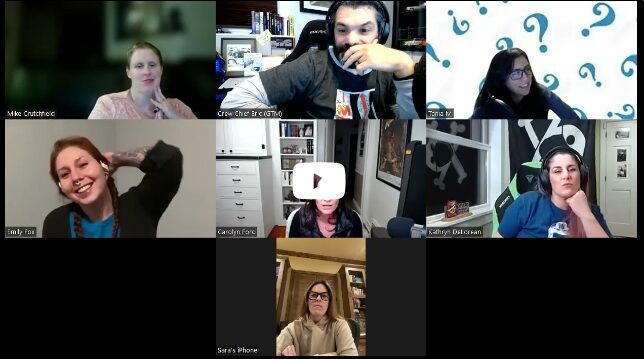
All of our BEHIND THE SCENES (BTS) Break/Fix episodes are raw and unedited, and expressly shared with the permission and consent of our guests.
Thanks to our panel of Petrol-heads!
Guest Co-Host: Sara Lacey
In case you missed it... be sure to check out the Break/Fix episode with our co-host. |  |  |
Do you want to keep up with all the latest trends and vehicle reviews? Then, be sure to check out www.agirlsguidetocars.com where you’ll find more articles by Sara.
Guest Co-Host: Carolyn Ford
In case you missed it... be sure to check out the Break/Fix episode with our co-host. |  |  |
Get techy with Carolyn over at Tech Transforms podcast. Catch up with Emily and Chrissy by learning more and joining the team at Gran Touring Motorsports Club.
Guest Co-Host: Kat DeLorean
In case you missed it... be sure to check out the Break/Fix episode with our co-host. |  |  |
And be sure to check out all the progress that Kat is making starting her very own car company at www.dngmotors.com as well as her online-museum as tribute to her father at the DeLorean Legacy Project.
Guest Co-Host: Nate Burton & Emily Fox
In case you missed it... be sure to check out the Break/Fix episode with our co-host. |  |  |
Guest Co-Host: Chrissy Crutchfield
In case you missed it... be sure to check out the Break/Fix episode with our co-host. |  |  |


